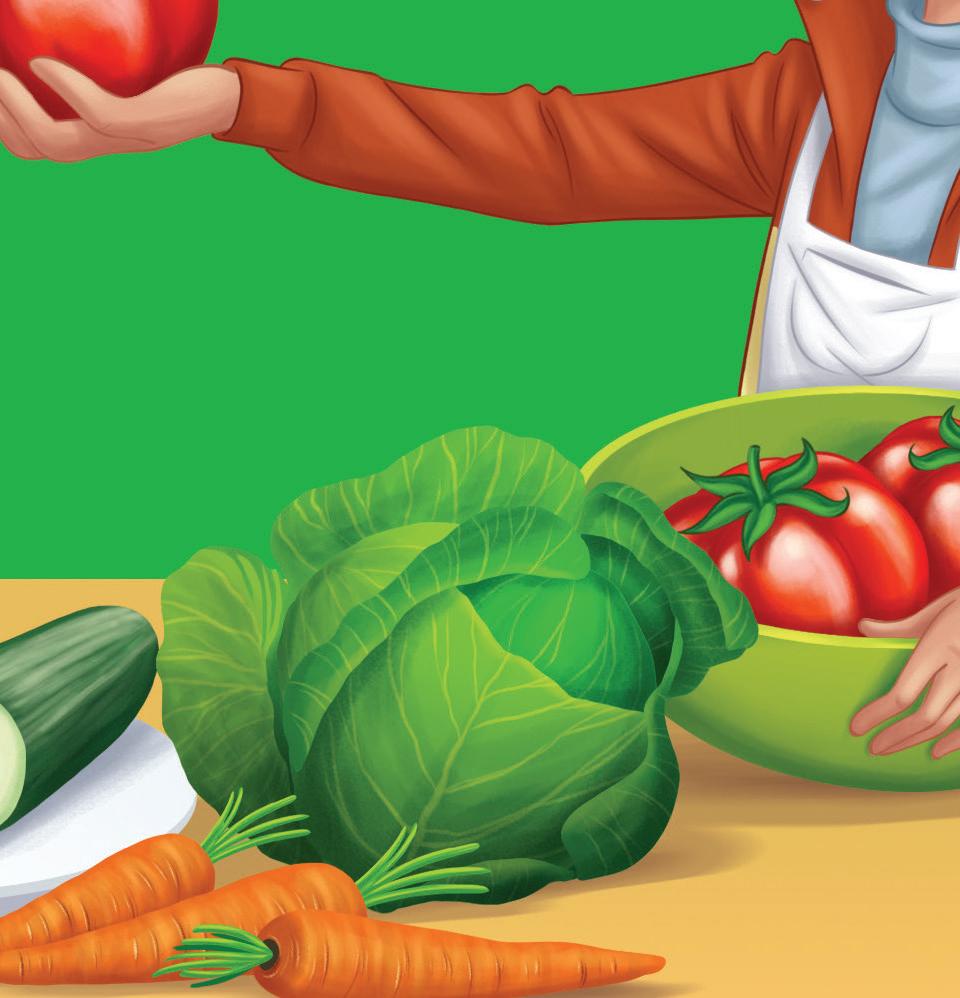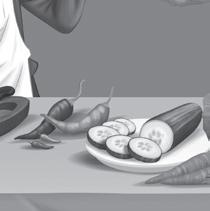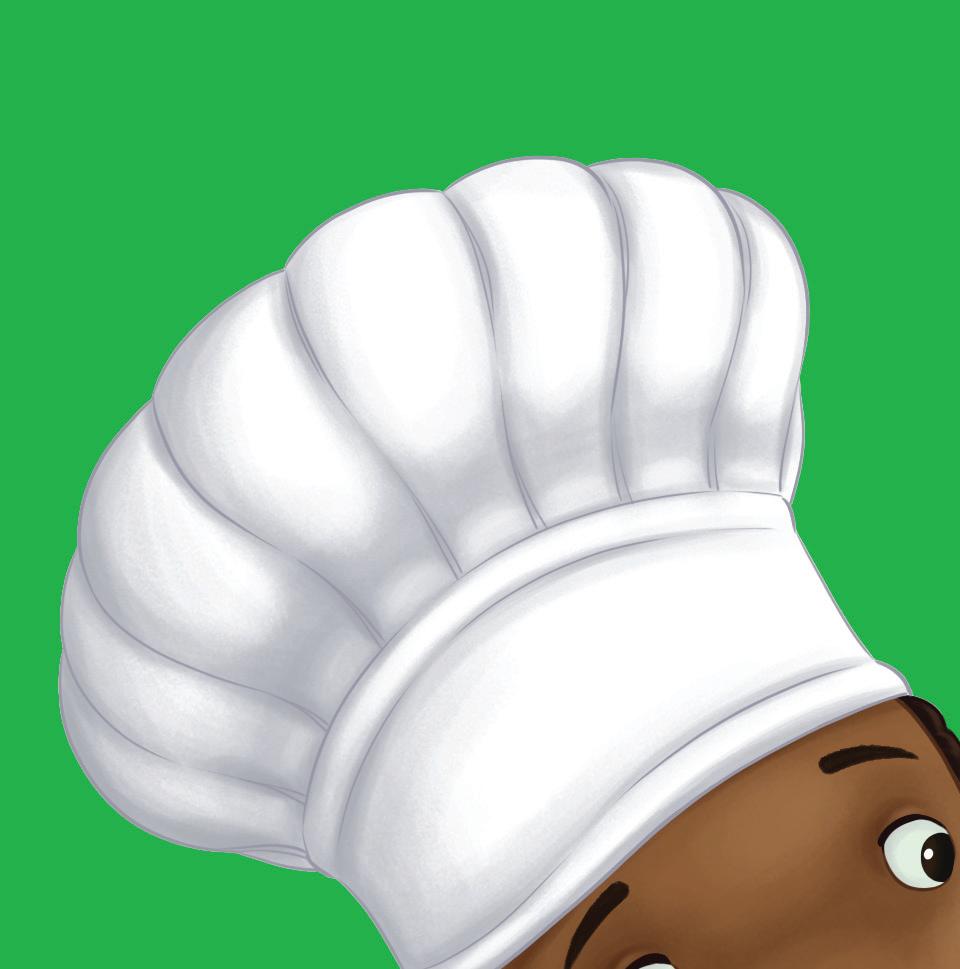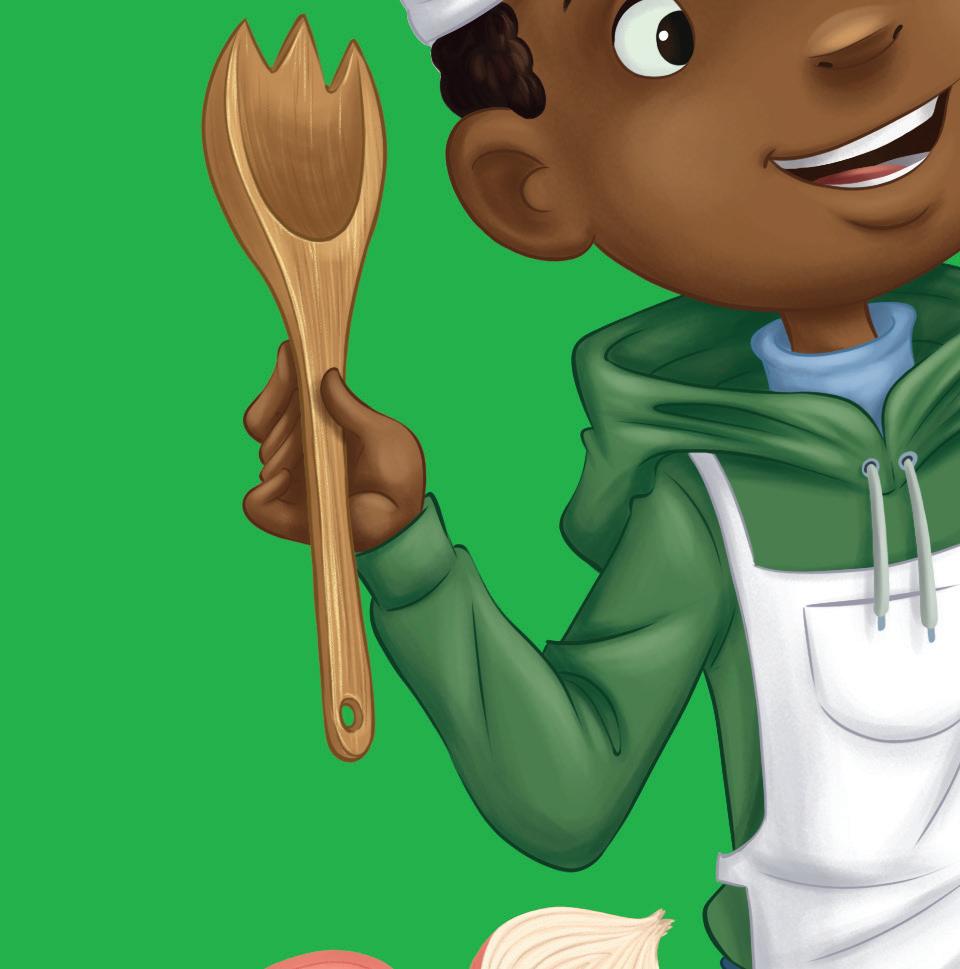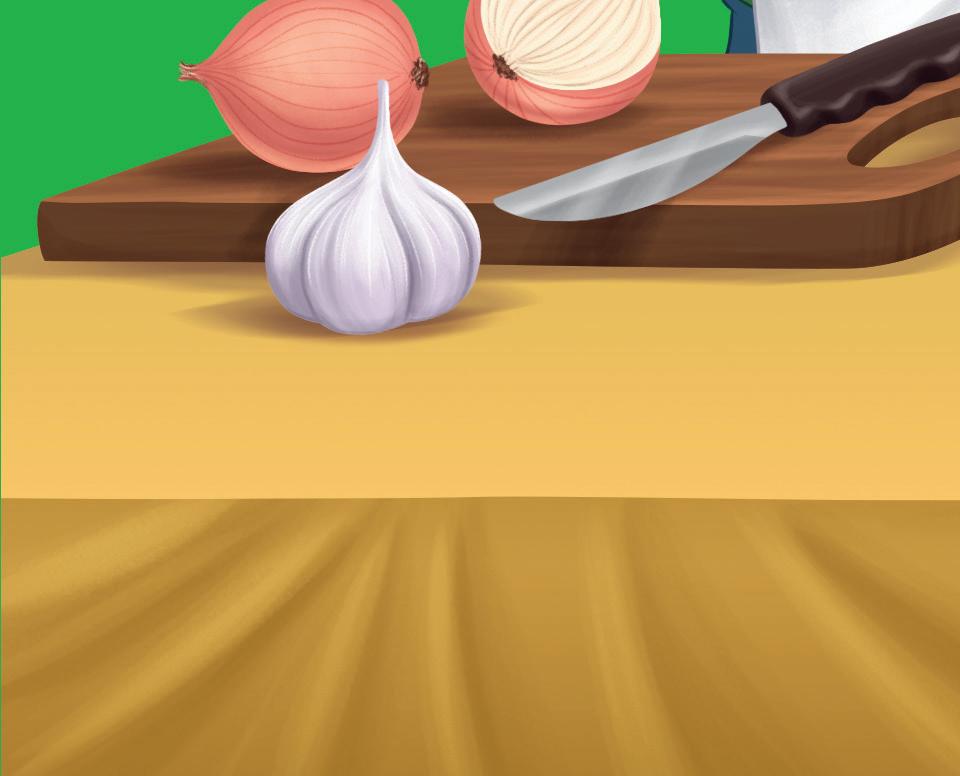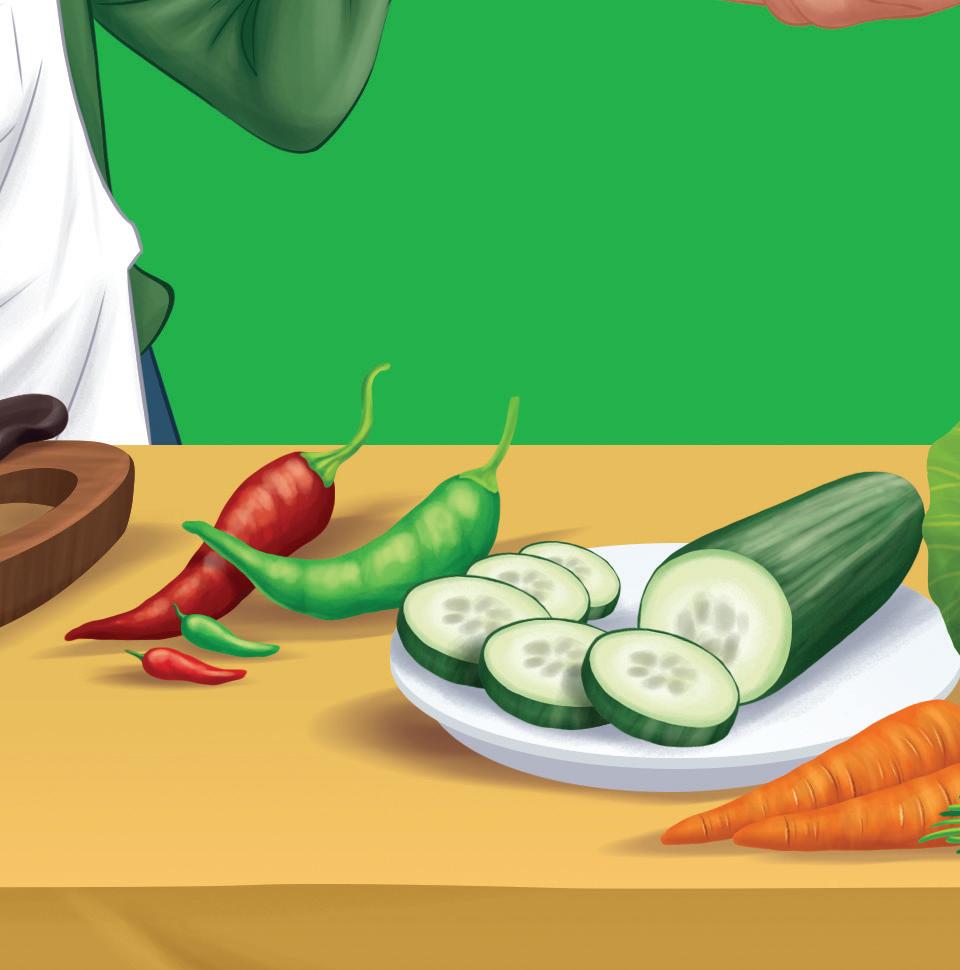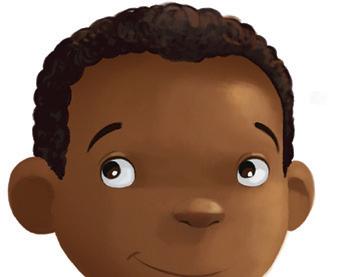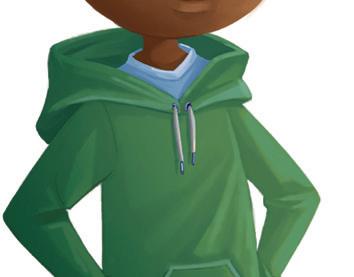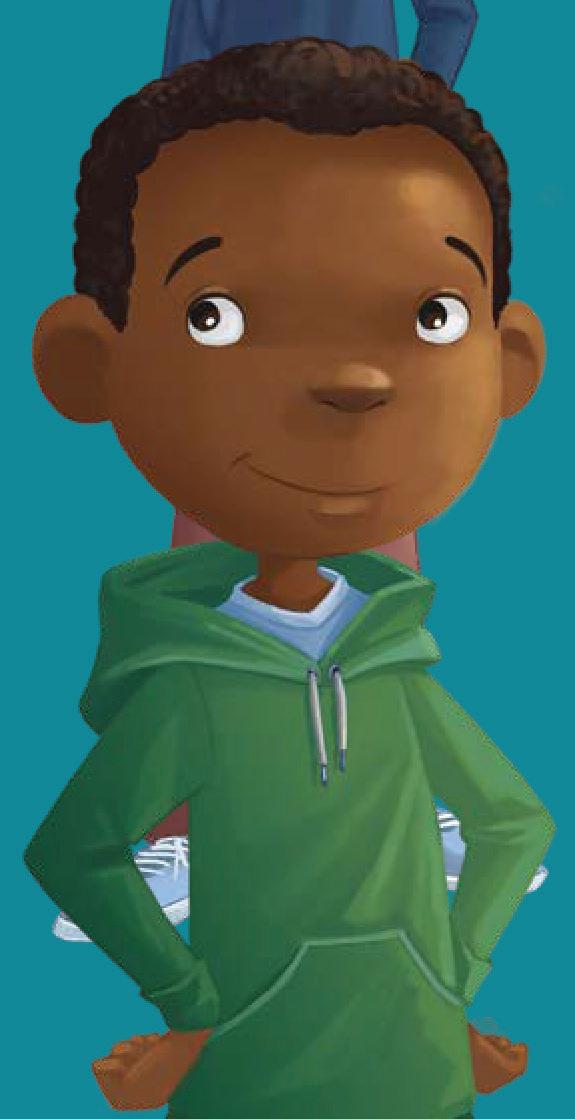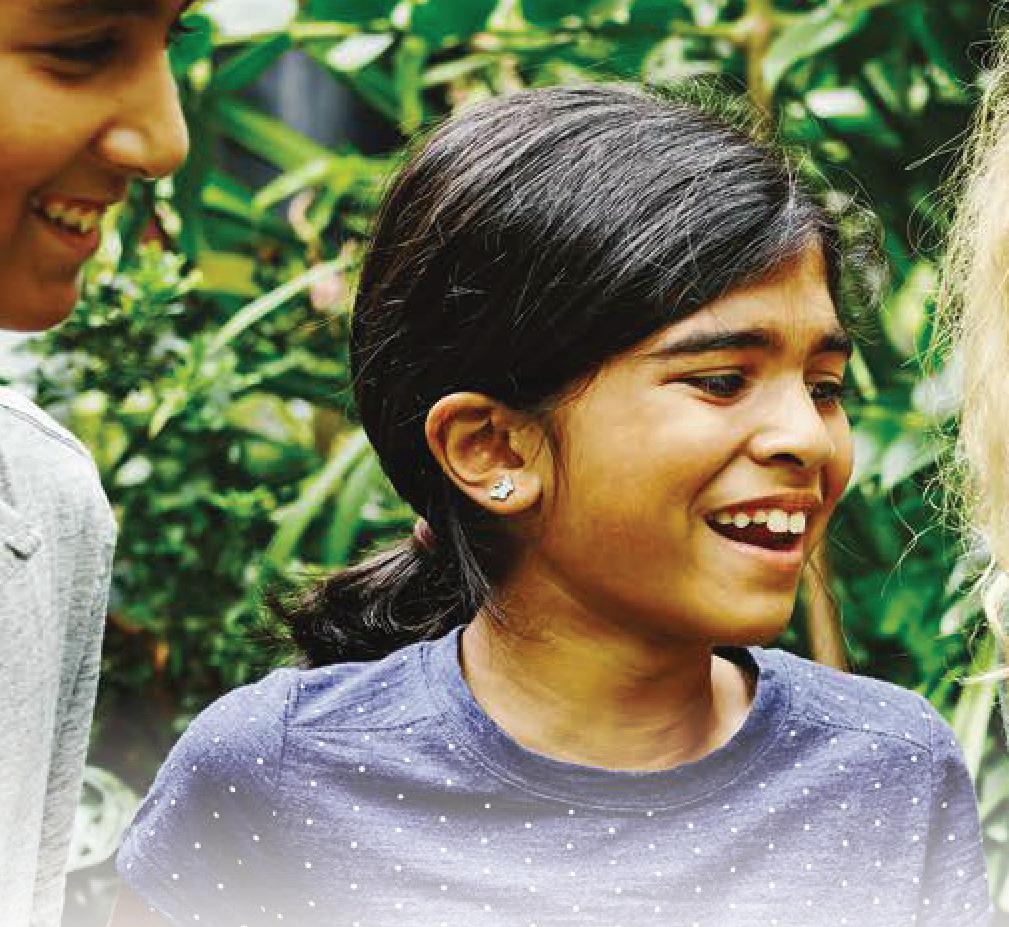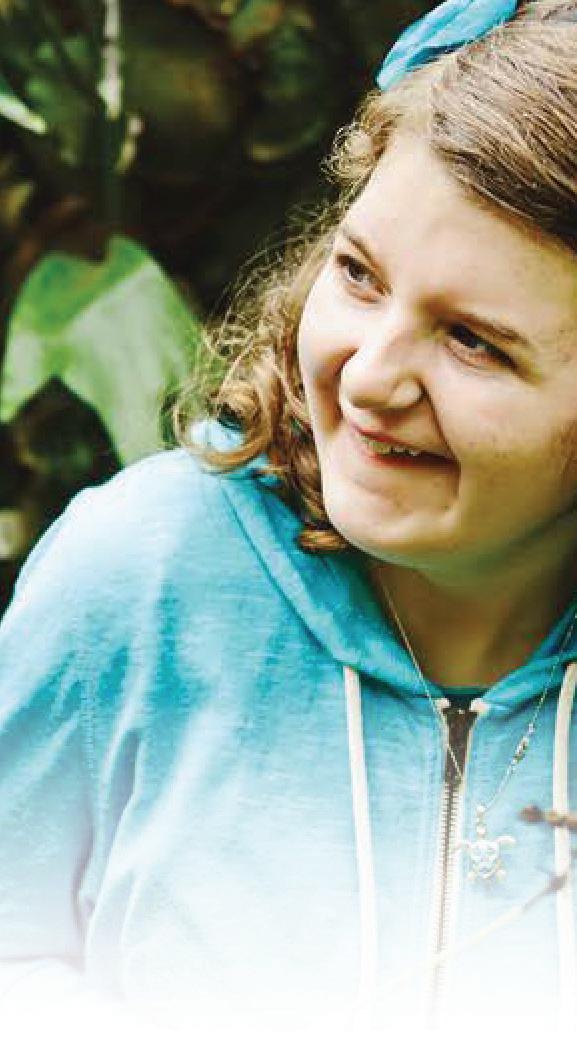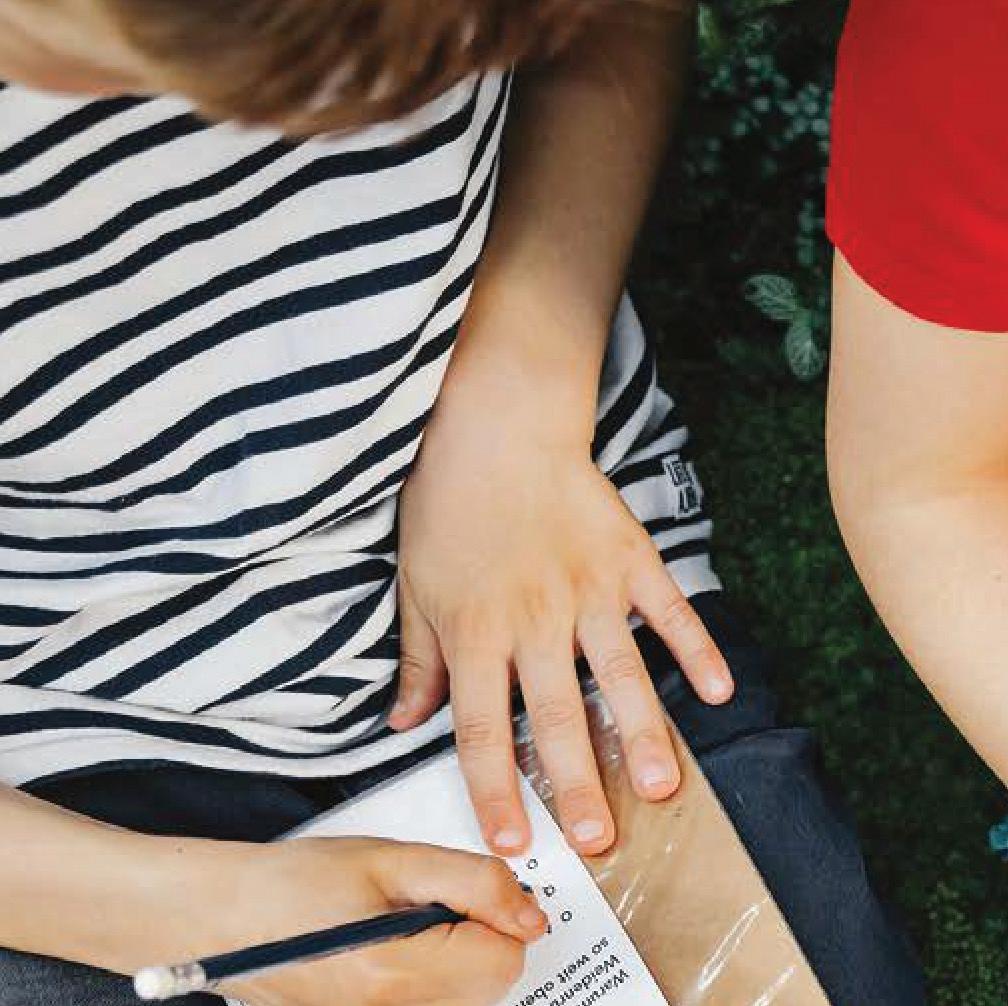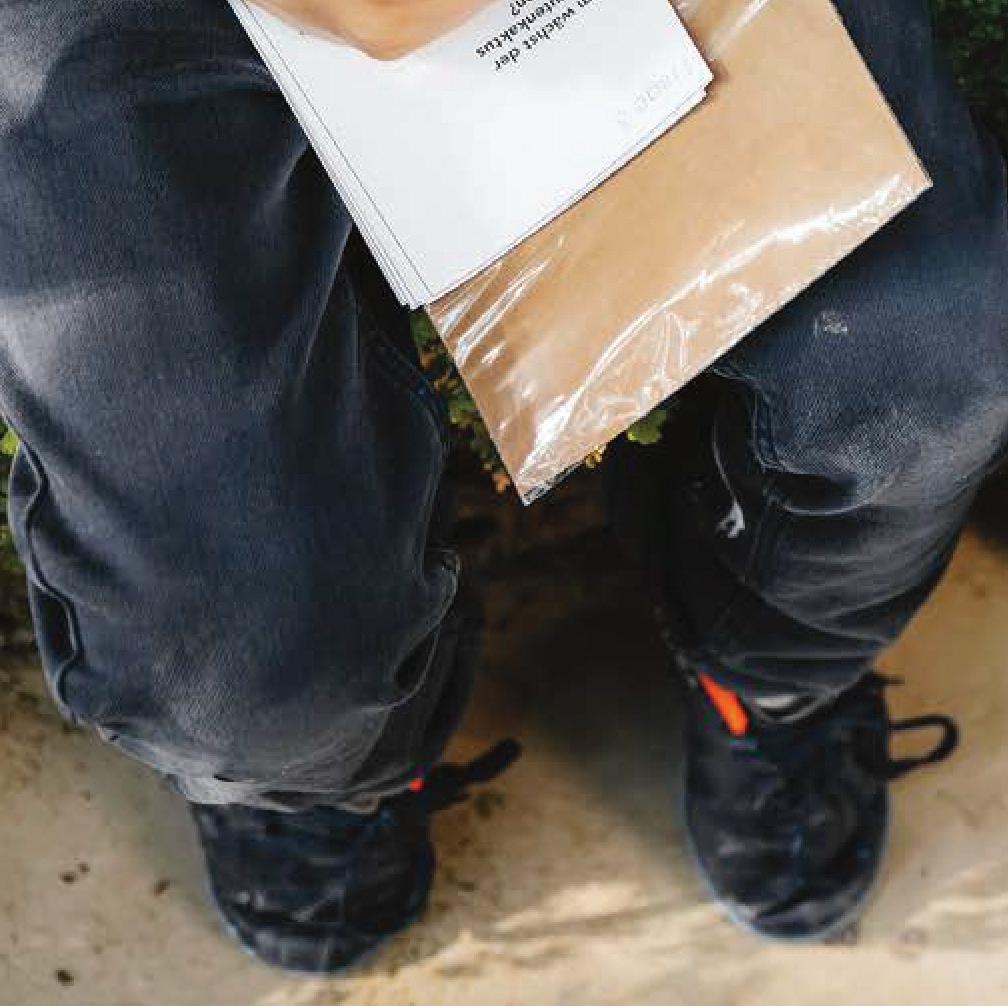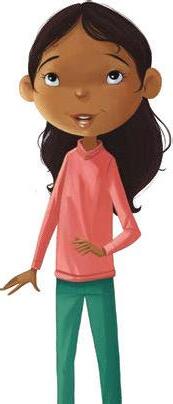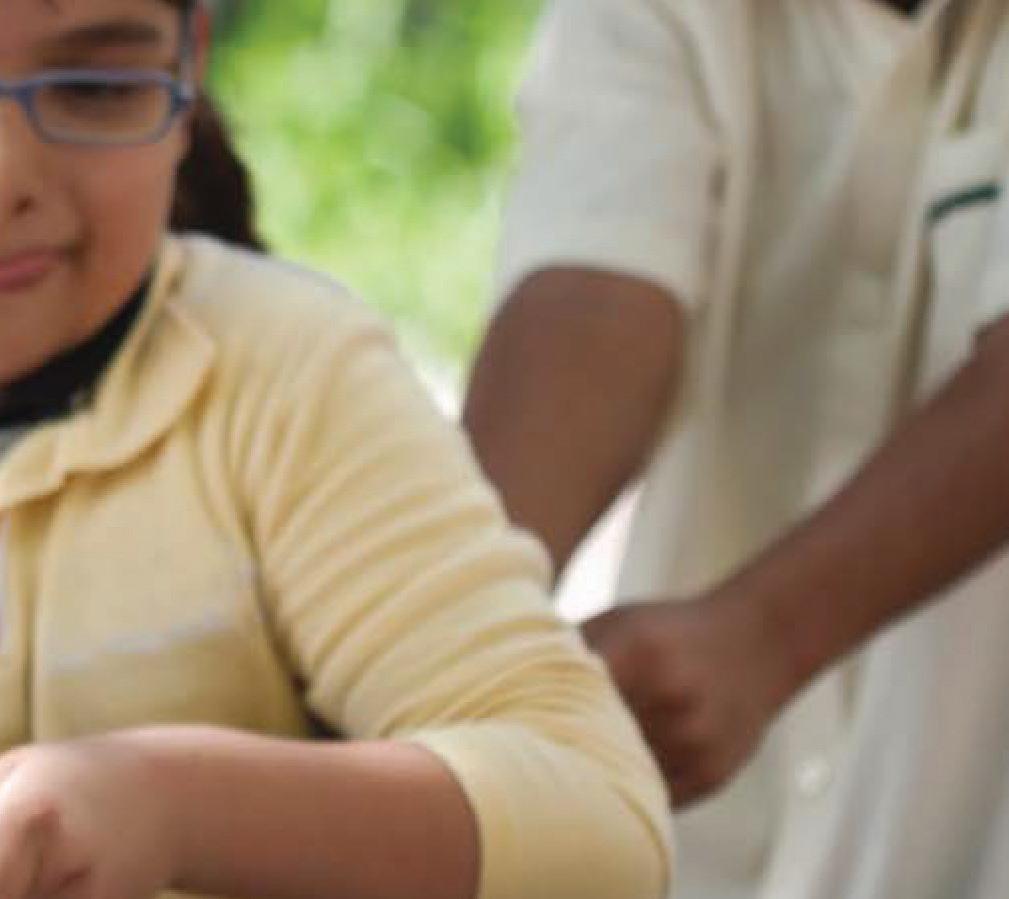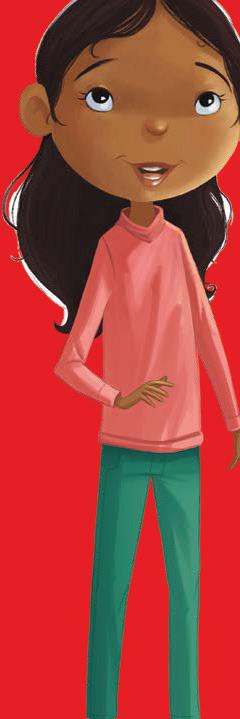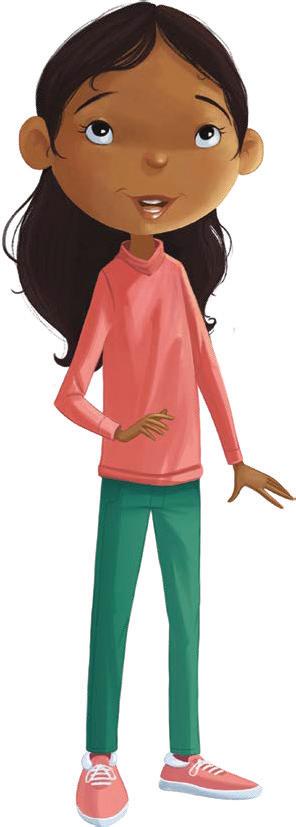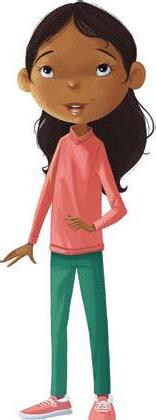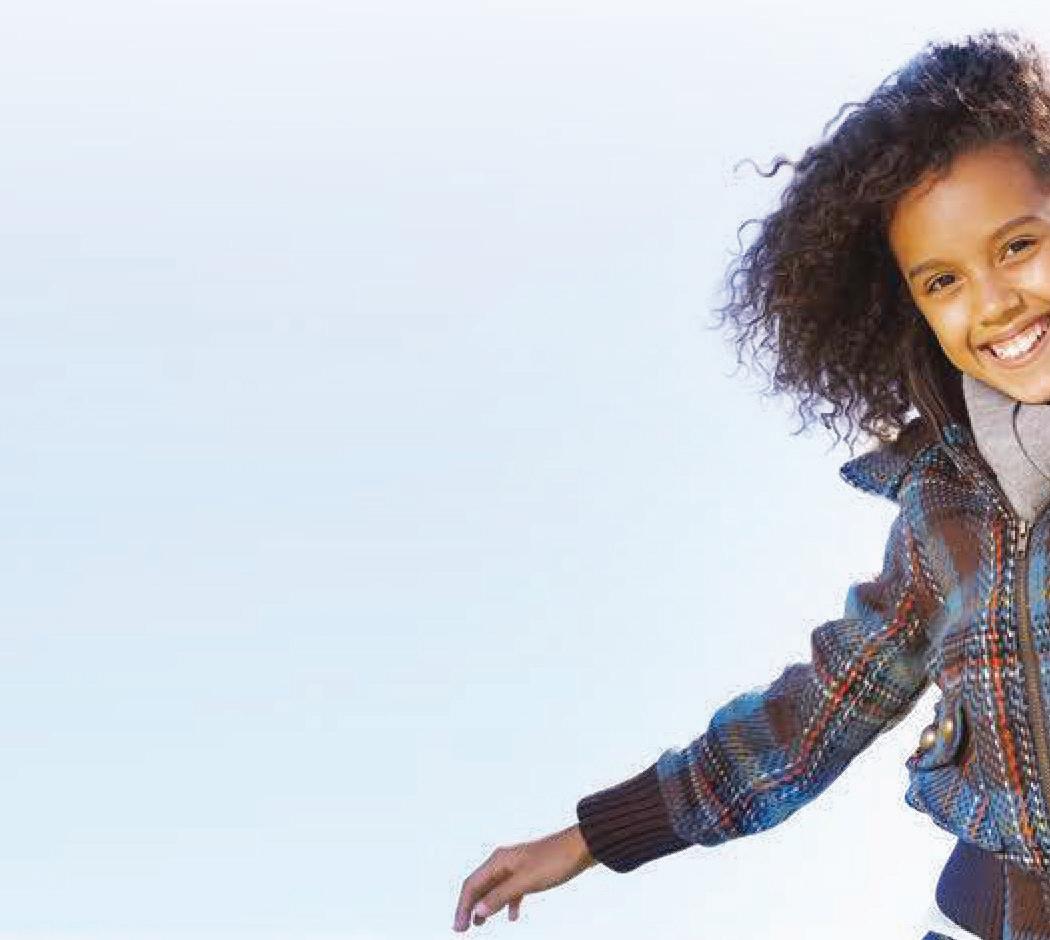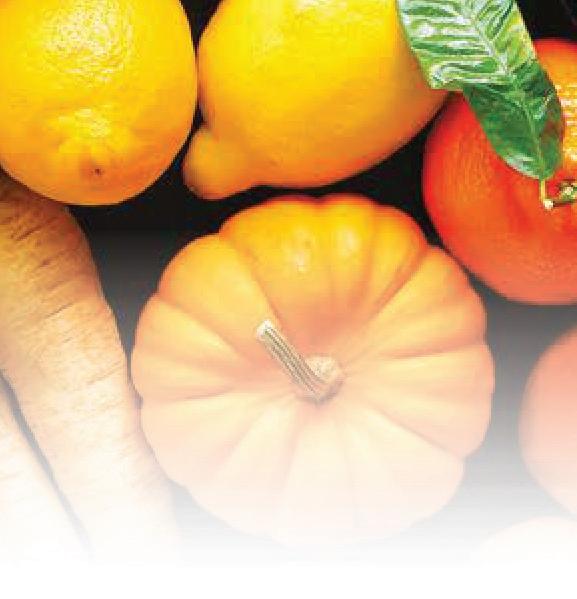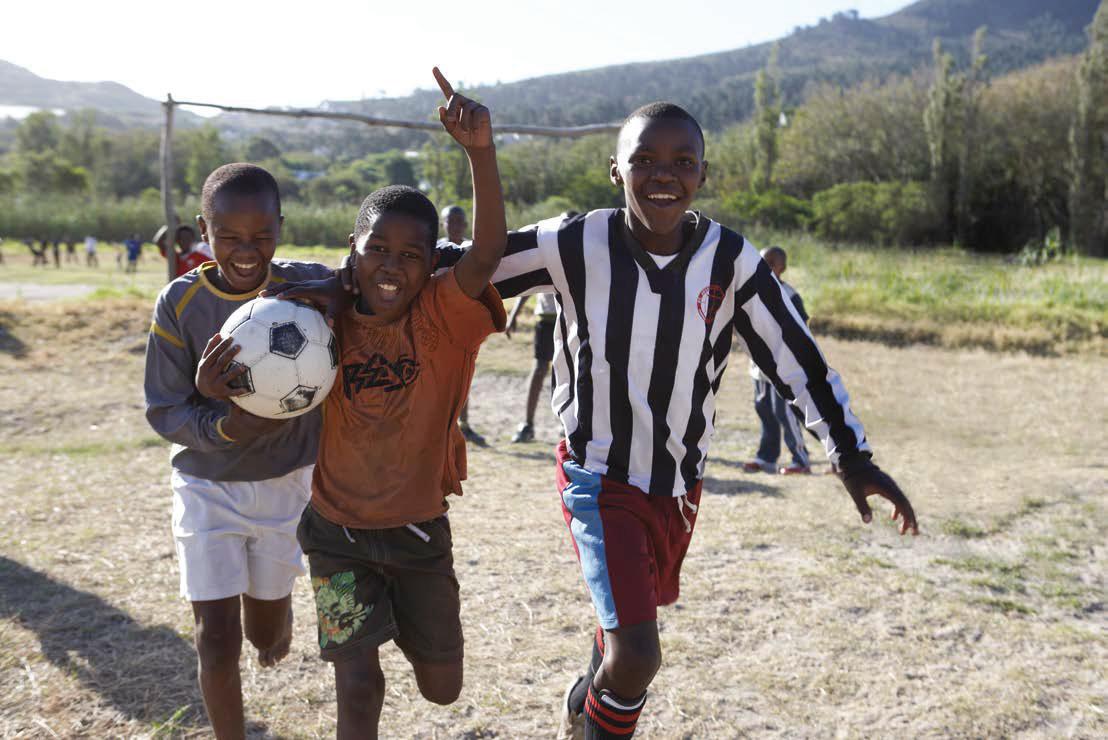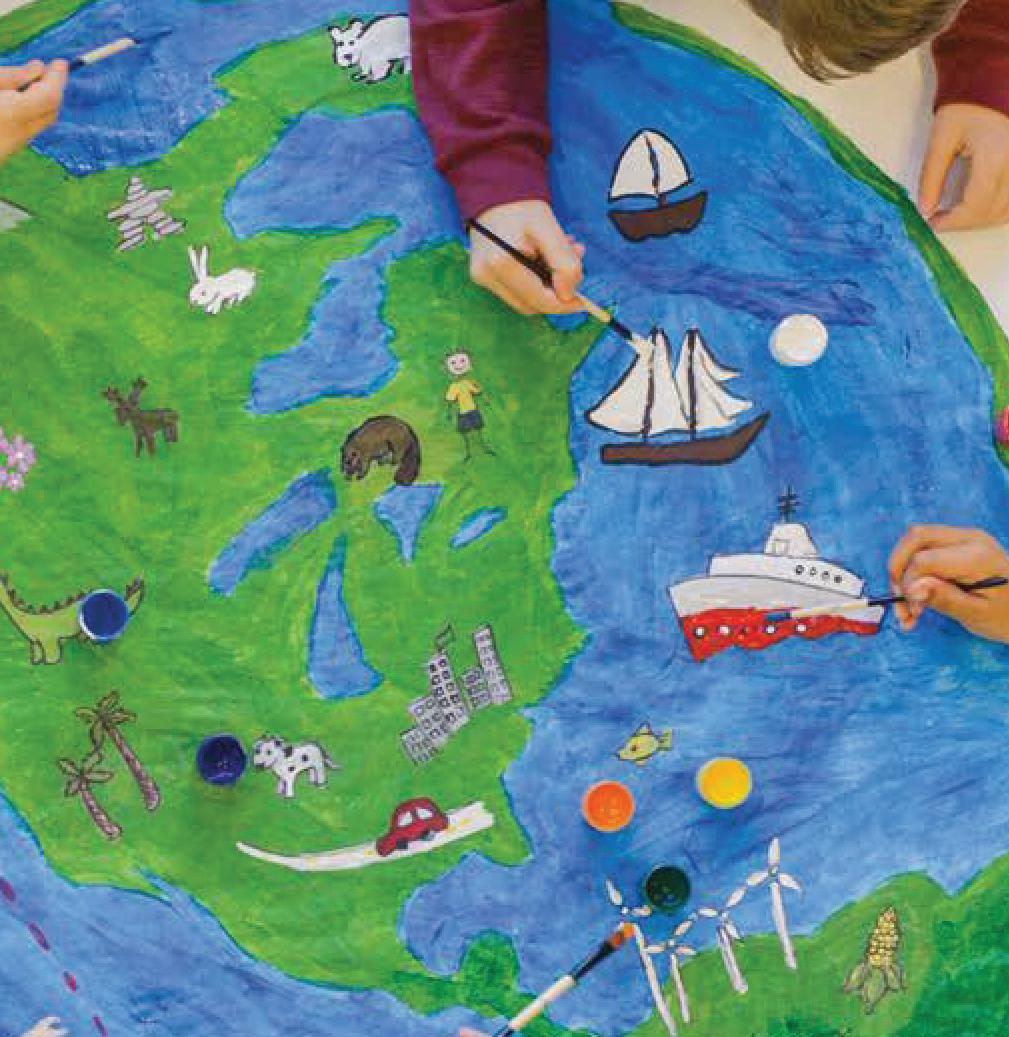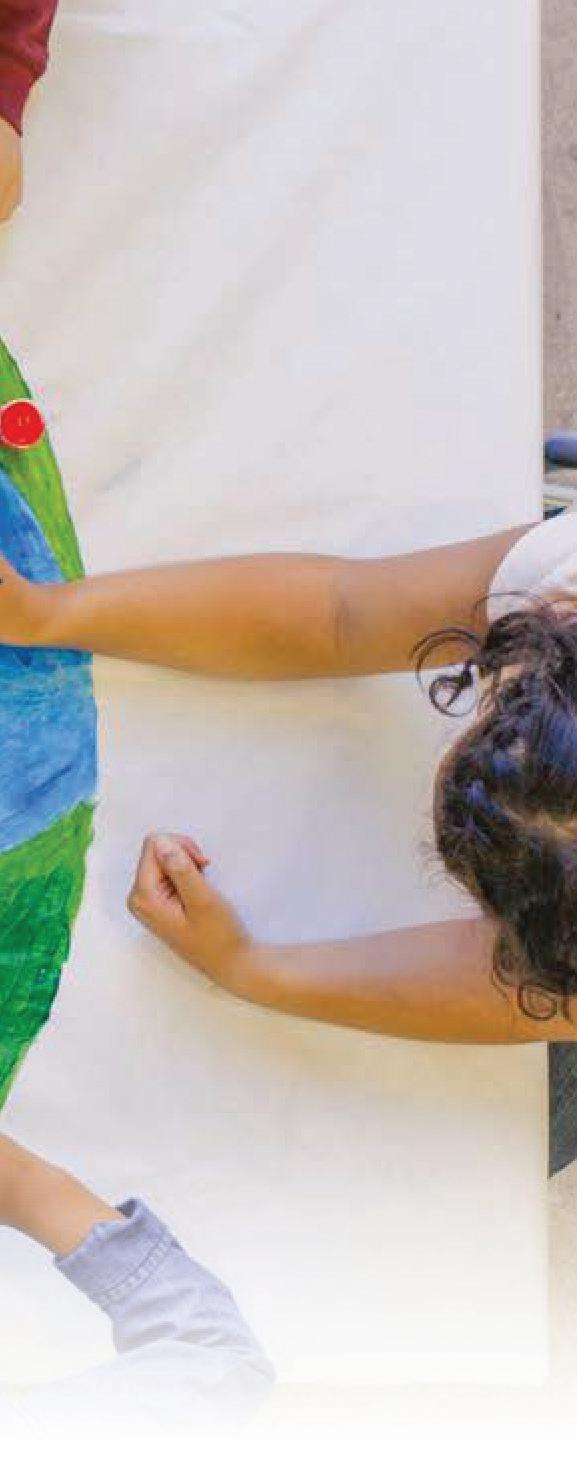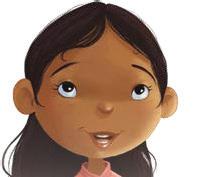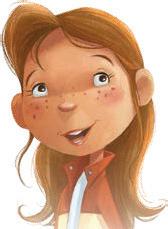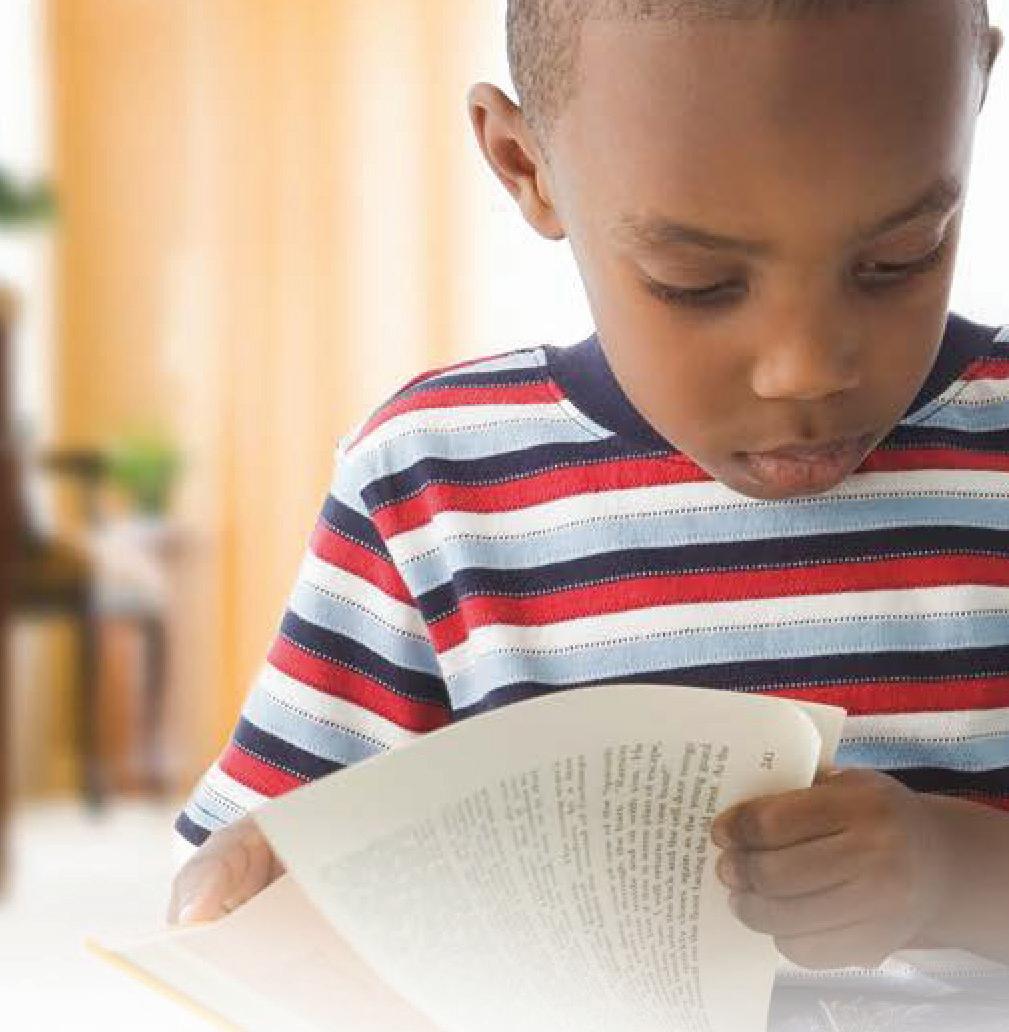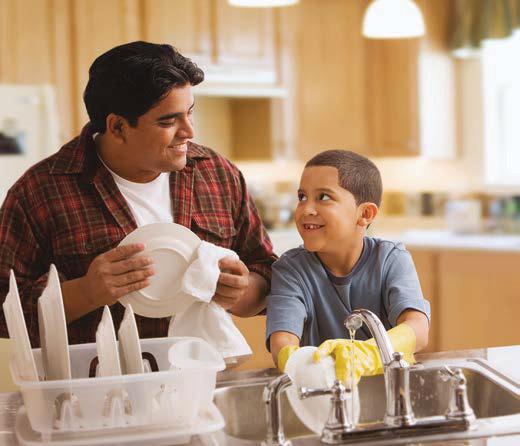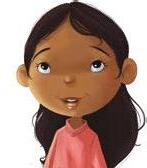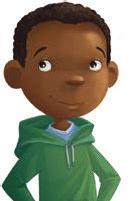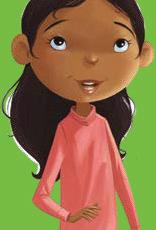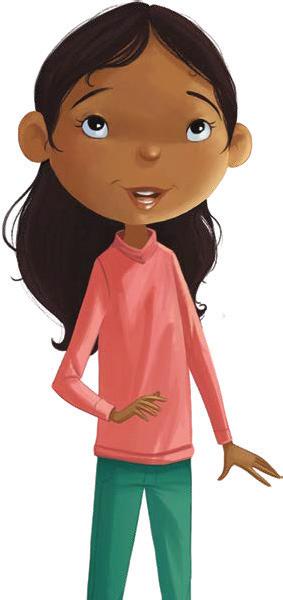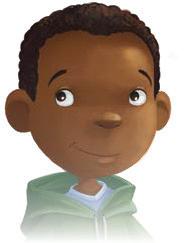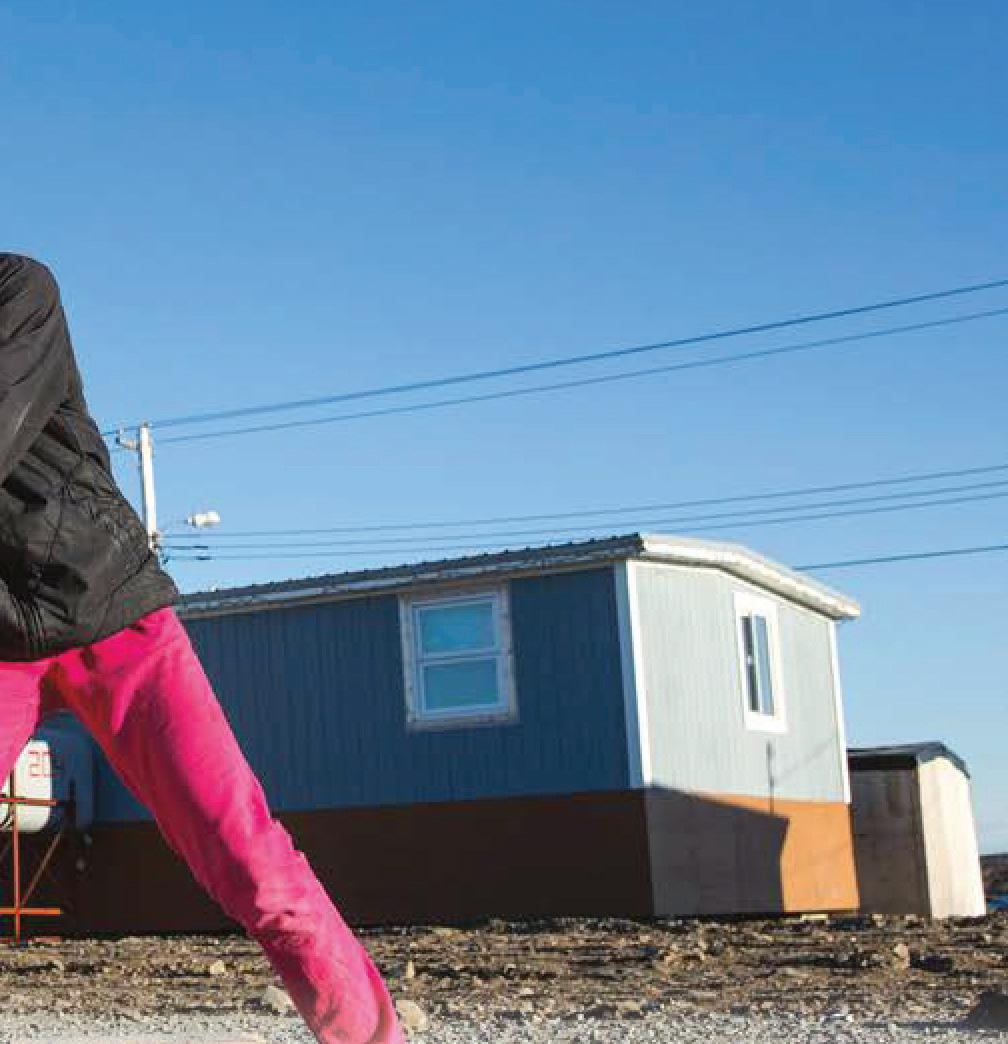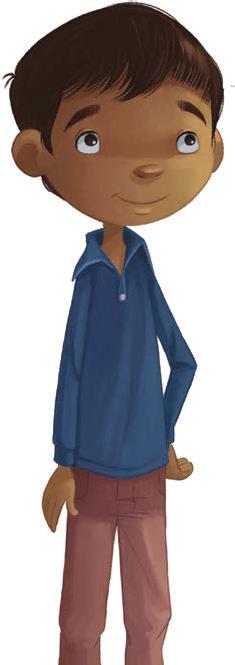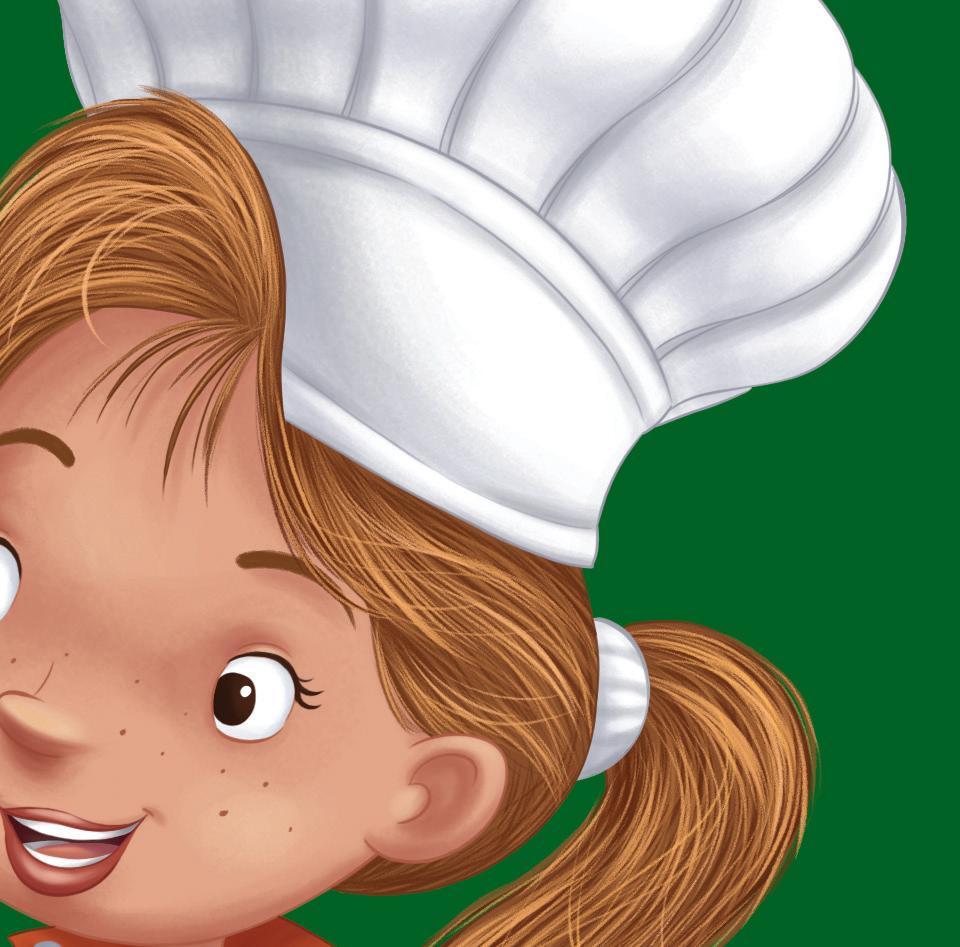How to use this Teacher’s Resource
This Teacher’s Resource contains both general guidance and teaching notes that help you to deliver the content in Cambridge Primary Global Perspectives Stage 4. There are teaching notes for each lesson of the Learner’s Skills Book. Each set of teaching notes contains the following features to help you deliver the unit.
Cambridge Primary Global Perspectives
4: Teacher’s Resource
Cambridge Primary Global Perspectives 4: Teacher’s Resource
SKILLS SECTION CROSS-CURRICULAR LINKS
Cambridge Primary Global Perspectives
4: Teacher’s Resource
TOPICS
MODELLED
At the start of each section there is a table of cross-curricular links and topics modelled, to give a clear oversight of coverage and potential use within each skill.
Learners have opportunities to apply their knowledge and understanding of, and skills in:
Starting with research skills: Lesson 3
Getting better at History: developing understanding of chronology
SKILLS SECTION
• Understand change and continuity
CROSS-CURRICULAR LINKS
English: writing
• Make short notes to record information from a text and use them to inform writing
Learners have opportunities to apply their knowledge and understanding of, and skills in: TOPICS
How can we help everyone to make healthy choices?
In Lesson 3, learners focus on starting to construct research questions, by making their own questions to help them understand an issue; and on information skills, by finding information in a source to help them answer their questions.
groups to discuss their work. Stage check answers with the whole class.
Cambridge Primary Global Perspectives 4: Teacher’s Resource
Getting better at History: developing understanding of chronology
• Understand change and continuity
Physical education: healthy bodies
English: writing
• Demonstrate understanding of the importance of physical activity in relation to health, fitness and wellbeing
• Make short notes to record information from a text and use them to inform writing
•Health and wellbeing
How can we help everyone to make healthy choices?
•Sport and recreation
Starting with research skills: Lesson 3
• Demonstrate understanding that a varied balanced diet contributes to a healthy and active lifestyle
Physical education: healthy bodies
The focus on physical education in this lesson continues to build understanding relevant to UN Sustainable Development Goal 4 ‘Ensure inclusive and equitable quality education and promote lifelong learning opportunities for all’.
• Demonstrate understanding of the importance of physical activity in relation to health, fitness and wellbeing
Differentiation: Support learners understanding of the questions questioning. Further support learners or grouping them and giving each set of cut-up questions and sources
• Health and wellbeing
• Sport and recreation
In Lesson 3, learners focus on starting to construct research questions, by making their own questions to help them understand an issue; and on information skills, by finding information in a source to help them answer their questions.
CAMBRIDGE STAGE 4 RESEARCH
• Demonstrate understanding that a varied balanced diet contributes to a healthy and active lifestyle
LEARNING OBJECTIVES
The learning objectives for English, maths and science in this table are taken from the following Cambridge International curriculum frameworks from 2020: Cambridge Primary English (0058), Cambridge Primary Mathematics (0096), Cambridge Primary Science (0097). You should always refer to the appropriate curriculum framework for the year of examination to confirm the details and for more information. The curriculum frameworks are available on the Cambridge International website at www.cambridgeinternational.org.
34Rs.01 Constructing research questions: Construct own questions to aid understanding of an issue
groups to discuss their work. Stage check answers with the whole class.
Downloadable 1.2. Challenge learners they have matched a question to Suggested answers: a = 2; b = 5;
Starter activity (approx.
Learning goals for other subjects have been created by the author to indicate the kind of cross-curricular links you may like to explore in your teaching.
The focus on physical education in this lesson continues to build understanding relevant to UN Sustainable Development Goal 4 ‘Ensure inclusive and equitable quality education and promote lifelong learning opportunities for all’.
The learning objectives for English, maths and science in this table are taken from the following Cambridge International curriculum frameworks from 2020: Cambridge Primary English (0058), Cambridge Primary Mathematics (0096), Cambridge Primary Science (0097). You should always refer to the appropriate curriculum framework for the year of examination to confirm the details and for more information. The curriculum frameworks are available on the Cambridge International website at www.cambridgeinternational.org.
34Rs.02 Information skills: Locate relevant information and answers to questions within sources provided
Starting with research skills: Lesson 1
Differentiation: Support learners understanding of the questions questioning. Further support learners or grouping them and giving each set of cut-up questions and sources
Good for: Starting to predict what might contain that could provide about an issue.
Downloadable 1.2. Challenge learners they have matched a question to
This is followed by a short passage featuring guidance about how to use the ‘Let's start thinking about...’ pages at the beginning of each section of the Learner's Skills Book, which are designed to introduce your learners to, or refamiliarise them with, some of the key ideas and vocabulary they will need in the coming lessons. These pages also detail the most appropriate Challenges to use in conjunction with the lessons in the Learner's Skills Book.
In Lesson 1, learners focus on starting to construct research questions, by coming up with their own questions to use in an investigation; and on conducting research, by carrying out an investigation using a questionnaire and interviewing each other.
CAMBRIDGE STAGE 4 RESEARCH LEARNING OBJECTIVES
Learning goals for other subjects have been created by the author to indicate the kind of cross-curricular links you may like to explore in your teaching.
Activity: Read through the learning with learners at the beginning of learners to read the title of a source, what questions the source might
Suggested answers: a = 2; b = 5; Starter activity (approx.
LESSON LEARNING GOALS
Starting with research skills: Lesson 1
In Lesson 1, learners focus on starting to construct research questions, by coming up with their own questions to use in an investigation; and on conducting research, by carrying out an investigation using a questionnaire and interviewing each other.
The focus on physical education in this lesson builds understanding relevant to UN Sustainable Development Goal 4 ‘Ensure inclusive and equitable quality education and promote lifelong learning opportunities for all’.
At the start of each lesson is a summary of the relevant learning objectives and learning goals for the lesson. The first learning objectives box lists the relevant objectives from the curriculum framework for the chapter skill. The second box lists additional objectives relevant to that lesson from other skills. The lesson learning goals feature takes the more learner friendly goals as they are set out in the Learner’s Skills Book.
CAMBRIDGE STAGE 4 RESEARCH LEARNING OBJECTIVES
The focus on physical education in this lesson builds understanding relevant to UN Sustainable Development Goal 4 ‘Ensure inclusive and equitable quality education and promote lifelong learning opportunities for all’.
CAMBRIDGE STAGE 4 RESEARCH LEARNING OBJECTIVES
34Rs.01 Constructing research questions: Construct own questions to aid understanding of an issue
34Rs.01 Constructing research questions: Construct own questions to aid understanding of an issue
34Rs.03 Conducting research: Conduct investigations, using interviews or questionnaires, making observations and taking appropriate measurements
34Rs.03 Conducting research: Conduct investigations, using interviews or questionnaires, making observations and taking appropriate measurements
CAMBRIDGE STAGE 4 ADDITIONAL LEARNING OBJECTIVES
34Rs.01 Constructing research questions: Construct own questions to aid understanding of an issue
To start to:
CAMBRIDGE STAGE 4 ADDITIONAL LEARNING OBJECTIVES
Good for: Starting to predict what might contain that could provide about an issue.
34A.04 Solving problems: Suggest personal actions that could make a positive difference to an issue affecting others
• make my own questions to help me find out about an issue
34Rs.02 Information skills: Locate relevant information and answers to questions within sources provided
Ways of working: Learners can begin with before getting into pairs In their pairs or small groups, they the opportunity to discuss the answers discussion questions. Then hold in which learners can share their to others.
Activity: Read through the learning with learners at the beginning of learners to read the title of a source, what questions the source might
34A.04 Solving problems: Suggest personal actions that could make a positive difference to an issue affecting others.
34Cl.01 Working together: Work positively with team members, contributing ideas to improve teamwork or the shared outcome.
LESSON LEARNING GOALS
Resources needed
To start to:
Learner’s Skills Book 4
34Cl.01 Working together: Work positively with team members, contributing ideas to improve teamwork or the shared outcome.
LESSON LEARNING GOALS
Downloadables 1.2 and 1.3
• make my own questions to help me find out about an issue
To start to:
LESSON LEARNING GOALS
Laptops, tablets, mobile phones or other devices to explore locally available fitness videos, apps, etc.
To start to:
• make my own questions to help me find out about an issue
Prior learning (approx. 5–10 mins)
Good for: Building on previous knowledge.
• carry out an investigation using my own questions.
• make my own questions to help me find out about an issue
Learner’s Skills Book 4
Downloadables 1.2 and 1.3
• carry out an investigation using my own questions.
Activity: Ask learners to match some questions to the sources that are most likely to provide answers.
tablets, mobile phones
Ways of working: Learners can work begin with before getting into pairs
Differentiation: Support learners understanding of the title of the questioning. Challenge learners questions they think the source to and why they think this.
Suggested answers:
In their pairs or small groups, they the opportunity to discuss the answers discussion questions. Then hold in which learners can share their to others.
Differentiation: Support learners understanding of the title of the questioning. Challenge learners questions they think the source to and why they think this.
1 Accept any reasonable responses, learners to explain why they provide the answer to a particular find this challenging, draw part of the title referring to ask how this might have made way people can keep fit and
2
Suggested answers:
1 Accept any reasonable responses, learners to explain why they
Accept any reasonable responses, that show an awareness of a digital world’ helps to define
viii
Primary Global Perspectives 4: Teacher’s Resource
Cambridge
MODELLED
source. (So ‘What websites
Resources needed
Laptops,
other
to
or
devices
provide the answer to a particular
SAMPLE
Original material © Cambridge University Press & Assessment 2024. This material is not final and is subject to further changes prior to publication.
Reflecting the activities in the Learner’s Skills Book, each lesson consists of advice on how to work through the What can I already do? activity, Starter activity, Main activity, Class discussion and Peer feedback. To help you plan, a recommended amount of time to spend on each element of the lesson is given (please note, this is only a recommendation and may need to be altered depending on the structure of your school day). A list of resources you will need is also included with each lesson.
The What can I already do? notes provide advice on where your learners should be in their learning before beginning the activity.
The ideas for the Starter activity are designed to grab your learners’ attention and create interest and engagement. They include advice on what to listen out for, how to diagnose any issues and how to make decisions about what to do next.
Resources needed
Learner’s Skills Book 4
Downloadable 1.1
Pictures of different aspects of healthy lifestyle choices
What can I already do? (approx. 5–10 mins)
Good for: Activating previous knowledge.
Differentiation: Support learners by checking their understanding of the items on the list by using questioning and/or pictures to illustrate their meaning. Challenge learners to explain why they have chosen one item from the list as the most important way of staying fit and healthy, and to come up with other suggestions.
Starting with research
The Main activity ideas give instructions for successful execution of the activity, with differentiation advice, suggestions for feedback and answers where relevant.
Differentiation: Support learners by checking their understanding of the items on the list by using questioning and/or pictures to illustrate their meaning. Challenge learners to explain why they have chosen one item from the list as the most important way of staying fit and healthy, and to come up with other suggestions.
Suggested answers: There are no definitive answers. Accept any reasonable response, especially if supported by evidence or reasoning.
Starter activity (approx. 10–15 mins)
Good for: Starting to consider how to plan an investigation into an issue based on the learners’ questions.
Suggested answers are given in each lesson for each of these activities. There is also a Worked Example for the Starter activity or Main activity, to demonstrate how the activity could work with a relevant topic. This serves as an example of what success looks like, but you do not have to use the topic given in the example. These Worked Examples are provided as downloadables.
Activity: Read through the learning goals for this lesson with learners at the beginning of this activity. Ask learners to read the transcript of a discussion by a group of students as they decide on an issue to investigate. Then ask learners to think about how an investigation can be carried out using primary research (i.e. by getting information from others using their own questions) and what questions they would ask.
Ways of working: The transcript of the discussion can be presented as a role play by asking different learners to read each part. Then give learners the opportunity to discuss the questions for the class discussion in pairs or small groups before staging a whole-class discussion in which learners share their ideas and respond to others.
Differentiation: Support learners by checking their understanding of the transcript by using questioning. Challenge learners to come up with ideas about how they could carry out an investigation into how children spend their time outside school hours, and what questions they could ask to elicit information on this issue.
Suggested answers: For the class discussion:
Activity: Ask learners to read a list of ways children can make healthy lifestyle choices, and to rank them in order of importance.
Suggested answers: There are no definitive answers. Accept any reasonable response, especially if supported by evidence or reasoning.
Differentiation: Support learners by checking their understanding of the items on the list by using questioning and/or pictures to illustrate their meaning. Challenge learners to explain why they have chosen one item from the list as the most important way of staying fit and healthy, and to come up with other suggestions.
Starter activity (approx. 10–15 mins)
Ways of working: Learners can work on the task individually to begin with before getting into pairs or small groups to discuss their work. Stage a plenary session so that learners can share their ideas with the whole class.
Suggested answers: There are no definitive answers. Accept any reasonable response, especially if supported by evidence or reasoning.
Good for: Starting to consider how to plan an investigation into an issue based on the learners’ questions.
Starter activity (approx. 10–15 mins)
Good for: Starting to consider how to plan an investigation into an issue based on the learners’ questions.
Differentiation: Support learners by checking their understanding of the items on the list by using questioning and/or pictures to illustrate their meaning. Challenge learners to explain why they have chosen one item from the list as the most important way of staying fit and healthy, and to come up with other suggestions.
Activity: Read through the learning goals for this lesson with learners at the beginning of this activity. Ask learners to read the transcript of a discussion by a group of students as they decide on an issue to investigate. Then ask learners to think about how an investigation can be carried out using primary research (i.e. by getting information from others using their own questions) and what questions they would ask.
Suggested answers: There are no definitive answers. Accept any reasonable response, especially if supported by evidence or reasoning.
Starting with research skills: Lesson 1
Starter activity (approx. 10–15 mins)
Activity: Read through the learning goals for this lesson with learners at the beginning of this activity. Ask learners to read the transcript of a discussion by a group of students as they decide on an issue to investigate. Then ask learners to think about how an investigation can be carried out using primary research (i.e. by getting information from others using their own questions) and what questions they would ask.
Ways of working: The transcript of the discussion can be presented as a role play by asking different learners to read each part. Then give learners the opportunity to discuss the questions for the class discussion in pairs or small groups before staging a whole-class discussion in which learners share their ideas and respond to others.
Good for: Starting to consider how to plan an investigation into an issue based on the learners’ questions.
Main activity (approx. 20–25 mins)
Good for: Starting to design a questionnaire to structure an investigation, and thinking about how to use the questionnaire in an interview.
Ways of working: The transcript of the discussion can be presented as a role play by asking different learners to read each part. Then give learners the opportunity to discuss the questions for the class discussion in pairs or small groups before staging a whole-class discussion in which learners share their ideas and respond to others.
Differentiation: Support learners by checking their understanding of the transcript by using questioning. Challenge learners to come up with ideas about how they could carry out an investigation into how children spend their time outside school hours, and what questions they could ask to elicit information on this issue.
Suggested answers: For the class discussion:
Activity: Ask learners to look at the questionnaire template, and to work in small groups to complete it by adding more activities that they think children participate in outside of school hours. They then think of what questions they will ask when they use the questionnaire to interview others. Stage a brief plenary.
Activity: Read through the learning goals for this lesson with learners at the beginning of this activity. Ask learners to read the transcript of a discussion by a group of students as they decide on an issue to investigate. Then ask learners to think about how an investigation can be carried out using primary research (i.e. by getting information from others using their own questions) and what questions they would ask.
Differentiation: Support learners by checking their understanding of the transcript by using questioning. Challenge learners to come up with ideas about how they could carry out an investigation into how children spend their time outside school hours, and what questions they could ask to elicit information on this issue.
Suggested answers: For the class discussion:
1 Encourage learners to come up with ideas about how they could conduct an investigation into this issue by carrying out their own primary research into how their peers spend their free time. This could be done by designing a questionnaire and then conducting interviews using the questionnaire. Accept any other reasonable responses.
Ways of working: The transcript of the discussion can be presented as a role play by asking different learners to read each part. Then give learners the opportunity to discuss the questions for the class discussion in pairs or small groups before staging a whole-class discussion in which learners share their ideas and respond to others.
Differentiation: Support learners by checking their understanding of the transcript by using questioning.
1 Encourage learners to come up with ideas about how they could conduct an investigation into this issue by carrying out their own primary research into how their peers spend their free time. This could be done by designing a questionnaire and then conducting interviews using the questionnaire. Accept any other reasonable responses.
2 Encourage learners to come up with questions that elicit specific data that will allow them to compare the information from different respondents (e.g. ‘How much time do you spend watching TV every week?’ rather than ‘What do you do in your free time?’).
Ways of working: Learners work in small groups to complete the questionnaire template. Then pair learners from different groups so that they can interview each other using their questionnaires, asking questions and recording the responses. (Use a pair to demonstrate in front of the class how to conduct the interviews, emphasising the need to adopt a polite and friendly tone – for example, ‘Can I ask you some questions?’, ‘Thank you for your time.’) Repeat the process by re-pairing learners so that they each interview at least two people. Give learners the opportunity to discuss the questions for the class discussion in their groups before holding a plenary session so that groups report back to the whole class.
elicit specific data that will allow them to compare the information from different respondents (e.g. ‘How much time do you spend watching TV every week?’ rather than ‘What do you do in your free time?’).
Differentiation: Support learners by giving each an appropriate role within the group. For example, in a group of four, there could be a recorder (to take notes of the group’s decisions), a facilitator (to check that everyone is given a chance to contribute), a timekeeper (to check that the task is completed within the time allocated) and a reporter (to report the group’s findings to the whole class). It might be helpful to display posters describing each role so that learners can be reminded of what they need to do during the group activity
Challenge learners to come up with could carry out an investigation into their time outside school hours, and could ask to elicit information on this
Starting with research
Suggested answers: For the class discussion:
Starting with research
Main activity (approx. 20–25 mins)
Good for: Starting to design a questionnaire an investigation, and thinking about how questionnaire in an interview.
1 Encourage learners to come up how they could conduct an investigation issue by carrying out their own into how their peers spend their could be done by designing a questionnaire then conducting interviews using Accept any other reasonable responses.
Main activity (approx. 20–25 mins)
Activity: Ask learners to look at the questionnaire template, and to work in small groups to it by adding more activities that they think participate in outside of school hours. of what questions they will ask when questionnaire to interview others. Stage
Good for: Starting to design a questionnaire an investigation, and thinking about questionnaire in an interview.
2 Encourage learners to come up elicit specific data that will allow the information from different ‘How much time do you spend every week?’ rather than ‘What free time?’).
Main activity (approx. 20–25 mins)
Activity: Ask learners to look at the template, and to work in small groups it by adding more activities that they participate in outside of school hours. of what questions they will ask when questionnaire to interview others. Stage session to check that learners are asking questions in order to elicit the data and then ask them to use the questionnaire interviews with other learners – preferably different group – and report back on found out.
Ways of working: Learners work in small complete the questionnaire template. Then from different groups so that they can other using their questionnaires, asking recording the responses. (Use a pair to in front of the class how to conduct the emphasising the need to adopt a polite – for example, ‘Can I ask you some questions?’, you for your time.’) Repeat the process learners so that they each interview at least Give learners the opportunity to discuss for the class discussion in their groups plenary session so that groups report back class.
Good for: Starting to design a questionnaire an investigation, and thinking about questionnaire in an interview.
Activity: Ask learners to look at the template, and to work in small groups it by adding more activities that they participate in outside of school hours. of what questions they will ask when questionnaire to interview others. Stage session to check that learners are asking questions in order to elicit the data and then ask them to use the questionnaire interviews with other learners – preferably different group – and report back on found out.
Ways of working: Learners work in complete the questionnaire template. from different groups so that they can other using their questionnaires, asking recording the responses. (Use a pair in front of the class how to conduct emphasising the need to adopt a polite –for example, ‘Can I ask you some you for your time.’) Repeat the process learners so that they each interview Give learners the opportunity to discuss for the class discussion in their groups a plenary session so that groups report whole class.
Differentiation: Support learners by giving appropriate role within the group. For group of four, there could be a recorder the group’s decisions), a facilitator (to check everyone is given a chance to contribute), (to check that the task is completed within allocated) and a reporter (to report the to the whole class). It might be helpful describing each role so that learners can what they need to do during the group Challenge learners to come up with appropriate questions to ask in the interviews and to conclusions from their findings.
Ways of working: Learners work in complete the questionnaire template. from different groups so that they can other using their questionnaires, asking recording the responses. (Use a pair in front of the class how to conduct emphasising the need to adopt a polite – for example, ‘Can I ask you some you for your time.’) Repeat the process learners so that they each interview Give learners the opportunity to discuss for the class discussion in their groups a plenary session so that groups report whole class.
Differentiation: Support learners by appropriate role within the group. For group of four, there could be a recorder of the group’s decisions), a facilitator everyone is given a chance to contribute), (to check that the task is completed allocated) and a reporter (to report to the whole class). It might be helpful posters describing each role so that reminded of what they need to do during activity. Challenge learners to come questions to ask in the interviews and conclusions from their findings.
Suggested answers: Final versions of the will vary from group to group, but should that children commonly do outside of the Worked Example in Downloadable 1.1).
Suggested answers: Final versions of will vary from group to group, but should that children commonly do outside the Worked Example in Downloadable 1.1).
How to use this Teacher’s Resource ix
Endorsed for the Cambridge Pathway Original material © Cambridge University Press & Assessment 2024. This material is not final and is subject to further changes prior to publication.
SAMPLE
At the end of each sub section (Starting with, Developing, Getting better at), there is advice on Taking it further. This contains ideas on how to draw on, go deeper into and get creative with the ideas presented each lesson. These passages also include suggestions of how you might give learners opportunities to put the skills they have learned into practice, either through the Cambridge International Global Perspectives Challenges, or through the set of projects available at cambridge.org/go.
they convince the other team members if they were involved in their discussion?
Taking it further: Lessons 4–6
Zara and her group’s investigation into the issue of helping people to make healthy choices could lead to an investigation into traditional games played by children elsewhere in the world that your learners might not be familiar with. Challenge them to compare and comment on skills, techniques and ideas used and how they are similar to/ different from games they have played before.
How would your learners introduce a child who has recently arrived in their country to their own customs and traditions, particularly when it comes to their leisure-time activities? Ask them to come up with a ‘guide for beginners’ to life in your country for a child
Supporting resources including worksheets, worked examples and a set of three projects are available on Cambridge GO. For more information on how to access and use your digital resource, please see front cover.
of their age. This could take the form leaflet, a video presentation or a slide Learners with higher prior attainment independent research into practical being taken locally, nationally and inclusive and equitable quality education lifelong learning opportunities for to find out about initiatives have been internationally. Could these initiatives there any good practice happening work well elsewhere? Again, recommendations the research could be presented in Successful completion of the activities will enable learners to tackle any aspect Cambridge Primary Global Perspectives requires use of research skills. The does my food come from?’, ‘How and made?’, ‘Helping people to belong’, lunch cost?’ all place particular emphasis
Getting better at research skills: Lesson 7
In Lesson 7, learners focus on getting better at constructing research questions, by coming up with their own questions in order to obtain more information about an issue that they are investigating.
The focus on urban green space in this lesson builds understanding relevant to UN Sustainable Development Goal 11 ‘Make cities and human settlements inclusive, safe, resilient and sustainable’.
CAMBRIDGE STAGE 4 RESEARCH LEARNING OBJECTIVES
34Rs.01 Constructing research questions: Construct own questions to aid understanding of an issue
LESSON LEARNING GOALS
To get better at:
• deciding what questions will help me find out most about an issue.
Resources needed
Learner’s Skills Book 4
Downloadables 1.8 and 1.9
Pictures of children engaged in physical sports, etc. past and present; pictures children’s lives have changed since
Prior learning (approx.
Good for: Building on previous knowledge.
Activity: Ask learners to read responses interview and to identify what questions
Ways of working: Learners work individually to begin with before getting into pairs to discuss their work. Stage a plenary with the whole class.
Differentiation: Support learners by understanding of the questions and questioning. Encourage learners to information each question is trying learners to explain their answers (e.g. question must be 1(a), because 1(b) question and the response is too general,
x
Primary Global Perspectives 4: Teacher’s
Cambridge
Resource
Getting better at research
Original material © Cambridge University Press & Assessment 2024. This material is not final and is subject to further changes prior to publication.
SAMPLE Endorsed for the Cambridge Pathway
Learners have opportunities to apply their knowledge and understanding of, and skills in:
Starting with Science: biology
• Describe the importance of movement in maintaining human health
Physical education: healthy bodies
• Demonstrate understanding of the importance of physical activity in relation to health, fitness and wellbeing
• Demonstrate understanding that a varied balanced diet contributes to a healthy and active lifestyle
Maths: statistics and probability
• Plan and conduct an investigation to answer statistical questions, considering what data to collect (categorical and discrete data)
• Record, organise and represent categorical and discrete data
• Choose and explain which representation to use in a given situation
• Interpret data, identifying similarities and variations, within and between data sets, to answer statistical questions; discuss conclusions, considering the sources of variation
English: reading
• Read and explore a range of non-fiction text types
• Identify key words and phrases that establish the main points in a text
DevelopingEnglish: speaking and listening
• Listen and respond appropriately, including asking and answering questions to develop ideas
• Extend a discussion by contributing relevant comments and questions
• Make short notes to record infor mation from a text and use them to inform writing
Science: thinking and working scientifically
• Ask scientific questions that can be investigated
• Make a prediction describing some possible outcomes of an enquiry
• Identify whether results support, or do not support, a prediction
• Describe simple patterns in results
• Make a conclusion from results and relate it to the scientific question being investigated
Geography: human geography
• Understanding geographical similarities and differences, e.g. the impact of climate on human activity
How can we help everyone to make healthy choices?
• Health and wellbeing
• Sport and recreation
How can we help everyone to make healthy choices?
• Health and wellbeing
• Sport and recreation
1 Research
Research
SKILLS SECTION CROSS-CURRICULAR LINKS
MODELLED
TOPICS
SAMPLE Endorsed for the Cambridge Pathway Original material © Cambridge University Press & Assessment 2024. This material is not final and is subject to further changes prior to publication.
SKILLS SECTION CROSS-CURRICULAR LINKS
Learners have opportunities to apply their knowledge and understanding of, and skills in:
Getting better at
History: developing understanding of chronology
• Understand change and continuity
English: writing
• Make short notes to record infor mation from a text and use them to inform writing
Physical education: healthy bodies
• Demonstrate understanding of the importance of physical activity in relation to health, fitness and wellbeing
• Demonstrate understanding that a varied balanced diet contributes to a healthy and active lifestyle
How can we help everyone to make healthy choices?
• Health and wellbeing
• Sport and recreation
The learning objectives for English, maths and science in this table are taken from the following Cambridge International curriculum frameworks from 2020: Cambridge Primary English (0058), Cambridge Primary Mathematics (0096), Cambridge Primary Science (0097). You should always refer to the appropriate curriculum framework for the year of examination to confirm the details and for more information. The curriculum frameworks are available on the Cambridge International website at www.cambridgeinternational.org.
Learning goals for other subjects have been created by the author to indicate the kind of cross-curricular links you may like to explore in your teaching.
Before starting your lessons on research skills, ask learners to read through the character speech bubbles. These will introduce the skill and get learners thinking about what research means. You may then wish to work through the ‘Let’s start thinking about research’ pages. These will provide learners with key vocabulary for research that they may find useful when employing this skill. You can choose Challenges for your learners to complete. These pages in the Learner Skills Book offer guidance on the type of questions you might ask to help learners research different topics.
Starting with research skills: Lesson 1
In Lesson 1, learners focus on starting to construct research questions, by coming up with their own questions to use in an investigation; and on conducting research, by carrying out an investigation using a questionnaire and interviewing each other.
The focus on physical education in this lesson builds understanding relevant to UN Sustainable Development Goal 4 ‘Ensure inclusive and equitable quality education and promote lifelong learning opportunities for all’.
CAMBRIDGE STAGE 4 RESEARCH LEARNING OBJECTIVES
34Rs.01 Constructing research questions: Construct own questions to aid understanding of an issue
34Rs.03 Conducting research: Conduct investigations, using interviews or questionnaires, making observations and taking appropriate measurements
2
Primary Global Perspectives 4: Teacher’s Resource
Cambridge
TOPICS MODELLED
Endorsed for the Cambridge Pathway Original material © Cambridge University Press & Assessment 2024. This material is not final and is subject to further changes prior to publication.
SAMPLE
CAMBRIDGE STAGE 4 ADDITIONAL LEARNING OBJECTIVES
34A.04 Solving problems: Suggest personal actions that could make a positive difference to an issue affecting others
34Cl.01 Working together: Work positively with team members, contributing ideas to improve teamwork or the shared outcome
LESSON LEARNING GOALS
To start to:
• make my own questions to help me find out about an issue
• carry out an investigation using my own questions
Resources needed
Learner’s Skills Book 4
Downloadable 1.1
Pictures of different aspects of healthy lifestyle choices
What can I already do? (approx. 5–10 mins)
Good for: Activating previous knowledge.
Activity: Ask learners to read a list of ways children can make healthy lifestyle choices, and to rank them in order of importance.
Ways of working: Learners can work on the task individually to begin with before getting into pairs or small groups to discuss their work. Stage a plenary session so that learners can share their ideas with the whole class.
Differentiation: Support learners by checking their understanding of the items on the list by using questioning and/or pictures to illustrate their meaning. Challenge learners to explain why they have chosen one item from the list as the most important way of staying fit and healthy, and to come up with other suggestions.
Suggested answers: There are no definitive answers. Accept any reasonable response, especially if supported by evidence or reasoning.
Starter activity (approx. 10–15 mins)
Good for: Starting to consider how to plan an investigation into an issue based on the learners’ questions.
Activity: Read through the learning goals for this lesson with learners at the beginning of this activity. Ask learners to read the transcript of a discussion by the group of characters as they decide on an issue to investigate. Then ask learners to think about how an investigation can be carried out using primary research (i.e. by getting information from others using their own questions) and what questions they would ask.
Ways of working: The transcript of the discussion can be presented as a role play by asking different learners to read each part. Then give learners the opportunity to discuss the questions for the class discussion in pairs or small groups before staging a whole-class discussion in which learners share their ideas and respond to others.
Differentiation: Support learners by checking their understanding of the transcript by using questioning. Challenge learners to come up with ideas about how they could carry out an investigation into how children spend their time outside school hours, and what questions they could ask to elicit information on this issue.
Suggested answers: For the class discussion:
1 Encourage learners to come up with ideas about how they could conduct an investigation into this issue by carrying out their own primary research into how their peers spend their free time. This could be done by designing a questionnaire and then conducting interviews using the questionnaire. Accept any other reasonable responses.
2 Encourage learners to come up with questions that elicit specific data that will allow them to compare the information from different respondents (e.g. ‘How much time do you spend watching TV every week?’ rather than ‘What do you do in your free time?’).
Main activity (approx. 20–25 mins)
Good for: Starting to design a questionnaire to structure an investigation, and thinking about how to use the questionnaire in an interview.
Activity: Ask learners to look at the questionnaire template, and to work in small groups to complete it by adding more activities that they think children participate in outside of school hours. They then think
Starting with research skills: Lesson 1 3
SAMPLE Endorsed for the Cambridge Pathway Original material © Cambridge University Press & Assessment 2024. This material is not final and is subject to further changes prior to publication.
of what questions they will ask when they use the questionnaire to interview others. Stage a brief plenary session to check that learners are asking appropriate questions in order to elicit the data they are looking for, and then ask them to use the questionnaire to conduct interviews with other learners – preferably from a different group – and report back on what they have found out.
Ways of working: Learners work in small groups to complete the questionnaire template. Then pair learners from different groups so that they can interview each other using their questionnaires, asking questions and recording the responses. (Use a pair to demonstrate in front of the class how to conduct the interviews, emphasising the need to adopt a polite and friendly tone – for example, ‘May I ask you some questions?’, ‘Thank you for your time.’) Repeat the process by re-pairing learners so that they each interview at least two people. Give learners the opportunity to discuss the questions for the class discussion in their groups before holding a plenary session so that groups report back to the whole class.
Differentiation: Support learners by giving each an appropriate role within the group. For example, in a group of four, there could be a recorder (to take notes of the group’s decisions), a facilitator (to check that everyone is given a chance to contribute), a timekeeper
(to check that the task is completed within the time allocated) and a reporter (to report the group’s findings to the whole class). It might be helpful to display posters describing each role so that learners can be reminded of what they need to do during the group activity. Challenge learners to come up with appropriate questions to ask in the interviews and to draw conclusions from their findings.
Suggested answers: Final versions of the questionnaire will vary from group to group, but should list activities that children commonly do outside of school hours (see the Worked Example in Downloadable 1.1). For the class discussion:
1 Encourage learners to draw conclusions from their data by looking for general patterns (e.g. what activity takes up most time outside school hours? what are the most popular activities?)
2 Encourage learners to think of how they could present their findings (e.g. by using graphs, charts or diagrams).
3 Ask learners to think about what they would like to improve (e.g. would they pick different activities to list on their questionnaire, or ask different questions? Would they conduct the interviews differently, or record their findings in another way?)
Starting with research skills: Lesson 2
In Lesson 2, learners focus on starting to record findings, by recording their own findings using a pictogram, and showing what they have learned from this.
The focus on physical education in this lesson again builds understanding relevant to UN Sustainable Development Goal 4 ‘Ensure inclusive and equitable quality education and promote lifelong learning opportunities for all’.
CAMBRIDGE STAGE 4 RESEARCH LEARNING OBJECTIVES
34Rs.04 Recording findings: Select, organise and record information from sources and findings from primary research in simple charts or diagrams
CAMBRIDGE STAGE 4 ADDITIONAL LEARNING OBJECTIVES
34A.02 Interpreting data: Draw simple conclusions from graphical or numerical data
34A.03 Making connections: Talk about simple causes of personal actions and consequences on others
LESSON LEARNING GOALS
To start to:
• use a simple chart or diagram to record results of research
4 Cambridge Primary Global Perspectives 4: Teacher’s Resource
SAMPLE Endorsed for the Cambridge Pathway Original material © Cambridge University Press & Assessment 2024. This material is not final and is subject to further changes prior to publication.
Resources needed
Learner’s Skills Book 4
What can I already do? (approx. 5–10 mins)
Good for: Building on previous knowledge.
Activity: Ask learners to read a list of steps taken during an investigation and to order them.
Ways of working: Learners work individually on the task to begin with before getting into pairs or small groups to discuss their work. Stage a plenary session to check answers with the whole class.
Differentiation: Support learners by checking their understanding of the steps in the list by using questioning and reminding learners of the investigation they carried out in the previous lesson. Challenge learners to explain their answers, giving reasons why one step should come before or after another.
Suggested answers:
Interview some people = 4
Think of some questions we can ask = 2
Tell others what we found out = 6
Decide on an issue we can investigate = 1
Make a questionnaire = 3
Record our results = 5
Starter activity (approx. 10–15 mins)
Good for: Starting to think about how findings from an investigation can be recorded using a pictogram.
Activity: Read through the learning goals for this lesson with learners at the beginning of this activity. Ask learners to look at how the results of an investigation have been recorded using a pictogram and to answer some questions about it.
Ways of working: Give learners the opportunity to discuss the questions for class discussion in pairs or small groups before holding a plenary session to share their answers with the whole class and respond to others.
Differentiation: Support learners by checking their understanding of how data is presented in the pictogram by using questioning. For example, check that learners understand that each ‘face’ in the pictogram represents one person, so it shows us that five people spent less than 1 hour doing sport or physical activity, while four people spent between 1 and 3 hours doing this, and
only one person spent more than 3 hours. Challenge learners to find patterns in the data that allow them to draw conclusions from it, and to come up with more questions that could be asked to clarify the data.
Suggested answers: For the class discussion:
1 Encourage learners to look for patterns in the data (e.g. that apart from homework, the activity that most children spent most time on was being on their phone, computer or other devices, followed by watching TV).
2 The data suggests that this could be because they are too busy doing other things, such as homework. However, the data doesn’t prove this, and more investigation is needed to see if, for example, there is a connection between the amount of time children spend doing homework (or another activity) and the amount of time they spend doing sport.
3 Encourage learners to see that the investigation could now be extended to target this information, possibly by re-interviewing those who said they played less than 1 hour of sport a week and asking them more questions about how they use their free time, or about other reasons why they don’t do more sport or physical activity.
Main activity (approx. 20–25 mins)
Good for: Starting to record learners’ own findings using a simple pictogram, and to consider what they can learn from the data.
Activity: Ask learners to complete a pictogram template using the results of the investigation conducted in the previous lesson.
Ways of working: Learners work in the same groups as in Lesson 1 and pool the data that they collected there in order to make a pictogram representing the findings of the whole group. They then look at the findings to find three things that their investigation has shown about what children do in their time outside school hours, and to think of another question related to this issue that they could now investigate.
Differentiation: Support learners by checking their understanding of how to represent data in the pictogram by using questioning or demonstration, and by assigning appropriate roles in the group (see Lesson 1). Challenge learners to find patterns in the data that tell them what can be learned from it.
Suggested answers: The things that learners learn from their findings will vary according to the data collected
Starting with research skills: Lesson 2 5
Endorsed for the Cambridge Pathway Original material © Cambridge University Press & Assessment 2024. This material is not final and is subject to further changes prior to publication.
SAMPLE
by the groups. Encourage children to look for things such as which activities most children spent longest on, which activities showed some children choosing to spend much more time on than other children, whether activities that involve sitting down take up more time than those that involve physical activity, and so on.
For a Worked Example of how the table should look, refer back to the example of the completed pictogram in the Learner’s Skills Book (Starter activity).
Responses to the follow-up questions might be:
1 a The activity that most children choose to spend longest on is being on their phone, computer or other device.
b Most children spend less than 3 hours a week playing a sport or doing physical activity.
c The activities that children spend most time on (e.g. homework) usually involve sitting down.
2 ‘If you limited the amount of time you spend on your phone, computer or other device, what would you like to do instead?’
Peer feedback (approx. 5–10 mins)
Pair each learner with a partner from a different group. Ask them to think about how clearly their partner has recorded their findings in the pictogram, whether they have shown clearly what they have learned from it and what they would like to learn next.
Starting with research skills: Lesson 3
In Lesson 3, learners focus on starting to construct research questions, by making their own questions to help them understand an issue; and on information skills, by finding information in a source to help them answer their questions.
The focus on physical education in this lesson continues to build understanding relevant to UN Sustainable Development Goal 4 ‘Ensure inclusive and equitable quality education and promote lifelong learning opportunities for all’.
CAMBRIDGE STAGE 4 RESEARCH LEARNING OBJECTIVES
34Rs.01 Constructing research questions: Construct own questions to aid understanding of an issue
34Rs.02 Information skills: Locate relevant information and answers to questions within sources provided
CAMBRIDGE STAGE 4 ADDITIONAL LEARNING OBJECTIVES
34E.01 Evaluating sources: Discuss a source, recognising the author’s ideas about an issue
34Rf.03 Personal perspectives: Talk about what has been learned during an activity and consider how personal ideas have changed
34Rf.04 Personal learning: Identify which types of activities support learning
LESSON LEARNING GOALS
To start to:
• make my own questions to help me find out about an issue
• find information and answers to questions in a source
Resources needed
Learner’s Skills Book 4
Downloadables 1.2 and 1.3
Laptops, tablets, mobile phones or other devices to explore locally available fitness videos, apps, etc.
6 Cambridge Primary Global Perspectives 4: Teacher’s Resource
Endorsed for the Cambridge Pathway Original material © Cambridge University Press & Assessment 2024. This material is not final and is subject to further changes prior to publication.
SAMPLE
Endorsed for the Cambridge Pathway
What can I already do? (approx. 5–10 mins)
Good for: Building on previous knowledge.
Activity: Ask learners to match some questions to the sources that are most likely to provide answers.
Ways of working: Learners can work individually on the task to begin with before getting into pairs or small groups to discuss their work. Stage a plenary session to check answers with the whole class.
Differentiation: Support learners by checking their understanding of the questions and sources by using questioning. Further support learners by pairing or grouping them and giving each pair or group a set of cut-up questions and sources to match, using Downloadable 1.2. Challenge learners to explain why they have matched a question to a particular source.
Suggested answers: a = 2; b = 5; c = 1; d = 4; e = 3
Starter activity (approx. 10–15 mins)
Good for: Starting to predict what information a source might contain that could provide answers to questions about an issue.
Activity: Read through the learning goals for this lesson with learners at the beginning of this activity. Ask learners to read the title of a source, and to think about what questions the source might contain the answers to.
Ways of working: Learners can work individually to begin with before getting into pairs or small groups. In their pairs or small groups, they can be given the opportunity to discuss the answers to the class discussion questions. Then hold a plenary session in which learners can share their ideas and respond to others.
Differentiation: Support learners by checking their understanding of the title of the source by using questioning. Challenge learners to explain which questions they think the source might provide answers to and why they think this.
Suggested answers:
1 Accept any reasonable responses, encouraging learners to explain why they think the source might provide the answer to a particular question. If they find this challenging, draw their attention to the part of the title referring to ‘in a digital world’ and ask how this might have made a difference to the way people can keep fit and healthy.
2 Accept any reasonable responses, especially any that show an awareness of how the phrase ‘in a digital world’ helps to define the scope of the source. (So ‘What websites can help children to keep fit and healthy?’ is a better question than ‘How does swimming help you to stay fit and healthy?’ in this context.)
Main activity (approx. 20–25 mins)
Good for: Starting to find information in a source that provides the answers to the learners’ own questions about an issue.
Activity: Ask the learners to decide on three questions that they think they will find the answers to in the source provided in Downloadable 1.3. (These questions can be selected from the list in the Starter activity, questions suggested during the class discussion or questions that learners have come up with themselves.) They then read the source and discuss the outcome of their reading.
Ways of working: Learners work in pairs or small groups to decide on their questions. They should be given the opportunity to discuss in their pairs or groups the questions in the class discussion that follows.
Differentiation: Support learners by encouraging them to select three questions from the list in the Starter activity if it is challenging for them to come up with additional questions. Challenge learners to come up with questions of their own that they think they might find the answers to in the source. If time allows, encourage learners to do some online research into what health and fitness-related videos would be appropriate for children of their age, or what apps are appropriate and locally available for downloading onto their phones.
Suggested answers: Learners might come up with questions similar to the following:
a How can you use your phone or laptop to help you keep fit and healthy?
b How can you limit the amount of time you spend looking at your phone?
c How much physical exercise should you do every day?
They would tick questions a and c because the source provides answers to these.
For the class discussion:
1 Of the questions on the list in the Starter activity, the source provides answers to:
a How much physical exercise should you do every day?
Starting with research skills: Lesson 3 7
SAMPLE
Original material © Cambridge University Press & Assessment 2024. This material is not final and is subject to further changes prior to publication.
d What type of physical activity helps you to keep fit and healthy?
e How can you use your phone or laptop to help you keep fit and healthy?
However, the importance of the activity lies not so much in predicting correctly what information the source contains, as in going through the process of asking questions of a source so that reading becomes more purposeful. In this respect, being able to identify what a source doesn’t tell the reader is just as important a skill as identifying what it does.
2 Encourage learners to think about other information they can find in the source – for example, ‘What are the advantages of watching fitness videos at home?’ or ‘How can an app on your phone help you to improve your fitness?’
3 Encourage learners to focus on what the source doesn’t tell them about how to keep fit and healthy and to come up with questions on this issue that they could do further research into.
Taking it further: Lessons 1–3
Encourage learners to find out what fitness resources (e.g. videos of physical exercises that they could do at home) are available online in your local area. They could then create a ‘menu’ of exercises that are age-appropriate and practical for them to carry out in a domestic setting as a way of starting to create their own fitness regimes. These could be videoed by learners, demonstrating how to do the exercises, and shared across the school. Alternatively, learners could create an illustrated booklet of instructions for each exercise. In either case, the idea of improving physical fitness could also be promoted at school through a poster campaign, video presentation, class assembly, and so on.
This could also be an opportunity to establish links with local sports clubs. What opportunities exist in your local area for children to take part? Your class could be set the challenge of producing a brochure for someone new to the area.
Successful completion of the activities in this chapter will enable learners to tackle any aspect of the Cambridge Primary Global Perspectives Challenges that requires use of research skills. The Challenges ‘Where does my food come from?’, ‘How and where is chocolate made?’, ‘Helping people to belong’, and ‘What does my lunch cost?’ all place particular emphasis on research.
Developing research skills: Lesson 4
In Lesson 4, learners focus on developing their skills in developing research skills, by developing a hypothesis about their issue; and conducting research, by using their prior understanding of an issue to help them construct research questions that could lead to comparative study.
The focus on physical education in this lesson further develops understanding relevant to UN Sustainable Development Goal 4 ‘Ensure inclusive and equitable quality education and promote lifelong learning opportunities for all’.
CAMBRIDGE STAGE 4 RESEARCH LEARNING OBJECTIVES
34Rs.01 Constructing research questions: Construct own questions to aid understanding of an issue
34Rs.03 Conducting research: Conduct investigations, using interviews or questionnaires, making observations and taking appropriate measurements
8 Cambridge Primary Global Perspectives 4: Teacher’s Resource
Endorsed for the Cambridge Pathway Original material © Cambridge University Press & Assessment 2024. This material is not final and is subject to further changes prior to publication.
SAMPLE
CAMBRIDGE STAGE 4 ADDITIONAL LEARNING OBJECTIVES
34E.02 Evaluating perspectives and arguments: Express an opinion about another person’s ideas on an issue, giving reasons for own opinion
LESSON LEARNING GOALS
To develop my knowledge and understanding about:
• how to make my own questions to find out more about an issue
• how to carry out an investigation using a questionnaire
Resources needed
Learner’s Skills Book 4
Downloadable 1.4
Stimulus material (e.g. appropriate images) for the issue the learners are investigating
It would be highly advantageous to have set up links with schools in contrasting contexts for the lessons that follow.
What can I already do? (approx. 5–10 mins)
Good for: Learners to activate their prior understanding of global similarities and differences.
Activity: Learners consider which of four statements on the issue of making healthy choices they most agree with. These statements express different views about the extent of global diversity on the issue.
Ways of working: You could put signs up around the room with the names of each of the four characters in the Learner’s Skills Book and ask learners to point to the name of the person they most agree with. You could then give learners the chance to share ideas with a person who has a similar/different view prior to opening up class discussion. You will want to emphasise an appropriate ethos of providing opportunities for prior understanding to be shared while empirically challenging the misunderstandings behind any prejudiced preconceptions that might emerge.
Differentiation: Support learners by reminding them of contrasting locations that they have studied in the past or that they may have connections with, even if that is only through representations in the media. Challenge learners to consider the extent to which their generalisations can be supported empirically –what information would they need to find out if the impressions they have developed are/are not accurate? Suggested answers: These will depend on learners’ prior learning, but this could lead them to agree with either viewpoint:
I agree with Zara that children around the world are pretty much the same. When I went to stay with my auntie in [location] I saw some children who don’t like healthy food.
I agree with Sofia. It doesn’t matter where they are; they will see the same brands.
I agree with Marcus. Some children are active because they like football and that is a global game.
I agree with Arun that there are massive differences around the world because there are huge differences in climate and wealth.
Starter activity (approx. 10 mins)
Good for: Developing learners’ understanding of different perspectives on an issue. This can be a fruitful source of questions for further enquiry.
Activity: Read through the learning goals for this lesson with learners at the beginning of this activity. Learners locate each character in the Learner’s Skills Book’s rationale for their opinion.
Ways of working: This activity would work well as paired work.
Differentiation: Support answers by encouraging learners to identify the reasoning that suggests significant difference/similarity first. Challenge learners to compare the characters’ rationale with their personal experience. Whose perspective is most similar to their own? Why is this?
Suggested answers: For a Worked Example, see Downloadable 1.4.
Main activity (approx. 20–30 mins)
Good for: Learners to develop their understanding of generating enquiry questions.
Developing research skills: Lesson 4 9
Endorsed for the Cambridge Pathway Original material © Cambridge University Press & Assessment 2024. This material is not final and is subject to further changes prior to publication.
SAMPLE
Activity: Learners suggest additional questions relevant to the Learner’s Skills Book characters’ issue of making healthy choices, then adapt these so that they could be used in a questionnaire.
Ways of working: Learners with higher prior attainment could move to independent working sooner. Learners who are less secure in their understanding could continue to have examples modelled until they are secure enough to work independently. You may consider supportive paired work to be an appropriate approach here.
Differentiation: Support learners by showing them how statements made by the characters have been used to generate questions. Provide them with a list of suitable question stems that would yield quantifiable answers –for example, ‘How many . . . ?’, ‘How much . . . ?’, ‘How often . . . ?’ Challenge learners to suggest when it may or may not be appropriate to use quantifiable information. Challenge questions for class discussion could include ‘Why is it a good idea to ask some open questions?’, ‘Why is it a good idea to ask questions that ask for a number?’
Suggested answers:
Open questionsQuestions that ask for a number
Why do children in your class use mobile phones?
What is your favourite game to play and why?
What is your favourite food and why?
For the class discussion:
How many children in your class have their own mobile phone?
How many children in your class say football is their favourite game?
How many times a week do you drink sugary cola?
1 More open questions are good because you can find out about people’s perspectives – why they think like they do.
2 Questions that ask for a number are good because you can make direct comparisons – for example, the proportion of children who like football in two different classes.
Developing research skills: Lesson 5
In Lesson 5, learners focus on developing their skills in conducting research, by applying skills previously developed to their own issue; and conducting research, by constructing research questions that could lead to comparative study on a global issue with relevance to their own community.
The focus on physical education in this lesson further develops understanding relevant to UN Sustainable Development Goal 4 ‘Ensure inclusive and equitable quality education and promote lifelong learning opportunities for all’.
CAMBRIDGE STAGE 4 RESEARCH LEARNING OBJECTIVES
34Rs.01 Constructing research questions: Construct own questions to aid understanding of an issue
34Rs.03 Conducting research: Conduct investigations, using interviews or questionnaires, making observations and taking appropriate measurements
CAMBRIDGE STAGE 4 ADDITIONAL LEARNING OBJECTIVES
34E.02 Evaluating perspectives and arguments: Express an opinion about another person’s ideas on an issue, giving reasons for own opinion
LESSON LEARNING GOALS
To develop my knowledge and understanding about:
• how to make my own questions to find out more about an issue
• how to carry out an investigation using a questionnaire
Resources needed
Learner’s Skills Book 4 Downloadable 1.5
10 Cambridge Primary Global Perspectives 4: Teacher’s Resource
Endorsed for the Cambridge Pathway Original material © Cambridge University Press & Assessment 2024. This material is not final and is subject to further changes prior to publication.
SAMPLE
Stimulus material (e.g. appropriate images) for the issue the learners are investigating
It is essential for this lesson that learners have some prior understanding of a global issue that has an impact in their local community.
What can I already do? (approx. 5–10 mins)
Good for: Learners to consider their prior understanding of the extent of global similarities or differences with regard to their issue.
Activity: Learners consider which of four statements on their issue they most agree with. Building on the previous lesson, these statements express different views about the extent of global diversity on the issue.
Ways of working: You could put signs up around the room with the letters ‘a’, ‘b’, ‘c’ and ‘d’ corresponding to the statements in the Learner’s Skills Book. Ask learners to point to the letter of the statement they most agree with. You could again give learners the chance to share ideas with a person who has a similar/different perspective prior to opening up class discussion. As in the previous lesson, you will want to emphasise an appropriate ethos of providing opportunities for prior understanding to be shared while empirically challenging the misunderstandings behind any prejudiced preconceptions that might emerge.
Differentiation: As in the previous lesson, support learners by reminding them of contrasting locations that they have studied in the past or that they may have connections with, even if that is only through representations in the media. Discuss with them the potential impact that factors such as urban/rural or climate contrasts may have on the issue. As in the previous lesson, challenge learners to consider the extent to which their generalisations can be supported empirically – what information would they need to find out if the impressions they have developed regarding their issue are/are not accurate?
Suggested answers: As in the previous lesson, these will depend on learning that has formed the children’s perspectives, and so this could potentially lead them to agree with any of these viewpoints. The following table explores possible responses to the issue of ‘access to water’:
Statements Reasons
As far as this issue is concerned, it doesn’t matter where you go; children are exactly the same.
All children must have access to water – it is a basic need.
As far as this issue is concerned, depending on where you go, there are some differences, but children are mostly the same. When I went to visit my cousins, they have water with their meal just as we do – only they like to buy bottled water.
As far as this issue is concerned, depending on where you go, there are some similarities, but children are mostly different.
As far as this issue is concerned, it depends entirely on where you are; children are very different.
All children need water, but not all children have access to clean water.
Children’s access to water depends on where they are because some parts of the world have very dry climates – in other places, it rains all the time.
Starter activity (approx. 10 mins)
Good for: Learners to apply their understanding of different perspectives, learned in the previous lesson, to developing questions on the issue they are focusing on.
Activity: Read through the learning goals for this lesson with learners at the beginning of this activity. Learners summarise the contrasting perspectives in their class/ group based on the previous discussion.
Ways of working: This activity would work well as paired work.
Differentiation: Support answers by focusing on one of the more outlying perspectives expressed on the similarity/difference continuum first. Challenge learners to compare the other members of the class/ group’s rationale with their personal experience. Whose perspective is most similar to their own? Why is this?
Suggested answers: For a Worked Example that explores possible responses to the issue of inequalities, see Downloadable 1.5.
Developing research skills: Lesson 5 11
Endorsed for the Cambridge Pathway Original material © Cambridge University Press & Assessment 2024. This material is not final and is subject to further changes prior to publication.
SAMPLE
Main activity (approx. 20–30 mins)
Good for: Learners to apply their understanding of enquiry questions to their own issue.
Activity: Learners suggest additional questions relevant to their own issue then classify these so that they could be used in a questionnaire.
Ways of working: As with the previous lesson, learners with higher prior attainment could move to independent working sooner. Learners who are less secure in their understanding could continue to have examples modelled until they are secure enough to work independently. Challenge learners to consider when/why it might be more useful to have answers in the form of numbers or when/why it might be more useful to have answers in the form of words.
Differentiation: Support learners by reminding them of how statements made by the characters were used to generate questions in the previous lesson. Provide them with a list of suitable question stems that would yield quantifiable answers – for example, ‘How many . . . ?’, ‘How much . . . ?’, ‘How often . . . ?’ Challenge learners to suggest why and when it may or may not be appropriate to use quantifiable information in their enquiry.
Suggested answers:
Open questionsQuestions that ask for a number
How do children in your class get access to water during school?
What are the rules on when you can get a drink of water?
How easy is it for people to access clean water where you live?
Why is this?
More open questions are good when . . .
You need to find out a wider range of information. E.g. ‘how easy . . . ‘ would help you to understand what they feel about it.
How many children in your class have access to mains water at home?
How many children in your class buy bottled water?
How far do you have to go to go swimming?
How much is your water bill?
Questions that give a number are good when . . .
You need to make direct comparisons – e.g. distances children in two different classes have to travel to go swimming.
Peer feedback (approx. 5–10 mins)
Pair each learner with a partner. Ask them to think about how effectively their partner has developed relevant questions to their issue and whether they have included appropriate ‘open’ and ‘quantifiable’ questions.
Developing research skills: Lesson 6
In Lesson 6, learners focus on developing their information skills, by looking at four different letters from around the world in response to the same questions; and recording their findings using keys and tables to summarise their conclusions and make comparisons.
The focus on physical education in this lesson further develops understanding relevant to UN Sustainable Development Goal 4 ‘Ensure inclusive and equitable quality education and promote lifelong learning opportunities for all’.
CAMBRIDGE STAGE 4 RESEARCH LEARNING OBJECTIVES
34Rs.02 Information skills: Locate relevant information and answers to questions within sources provided
34Rs.04 Recording findings: Select, organise and record information from sources and findings from primary research in simple charts or diagrams
12 Cambridge Primary Global Perspectives 4: Teacher’s Resource
Endorsed for the Cambridge Pathway Original material © Cambridge University Press & Assessment 2024. This material is not final and is subject to further changes prior to publication.
SAMPLE
CAMBRIDGE STAGE 4 ADDITIONAL LEARNING OBJECTIVES
34A.01 Identifying perspectives: Recognise that people think different things about an issue
34E.02 Evaluating perspectives and arguments: Express an opinion about another person’s ideas on an issue, giving reasons for own opinion
34Rf.03 Personal perspectives: Talk about what has been learned during an activity and consider how personal ideas have changed
34Rf.04 Personal learning: Identify which types of activities support learning
LESSON LEARNING GOALS
To develop my knowledge and understanding about:
• how to find information and answers to questions in one or more sources
• how to use simple charts or diagrams to record results of my own research
Resources needed
Learner’s Skills Book 4
Downloadables 1.6 and 1.7
What can I already do? (approx. 5–10 mins)
Good for: Introducing learners to summarising information in a table by applying this skill to information they are familiar with.
Activity: Learners use a key to assess the extent to which four statements are supported by survey evidence recorded in table form.
Ways of working: This would work well as paired discussion but could be completed individually.
Differentiation: Support learners by encouraging them to spot something that cannot be supported by the evidence first. Challenge learners to provide additional statements that could fit into each category.
Suggested answers: a = ***; b = X; c = *; d = **
Starter activity (approx. 10–15 mins)
Good for: Learners to begin using a simple chart to summarise written information.
Activity: Read through the learning goals for this lesson with learners at the beginning of this activity. Learners read a letter (provided in Downloadable 1.6) that responds to the characters’ questions about healthy lifestyles and use a table to assess the extent to which the lifestyle described is similar to their own.
Ways of working: As with the What can I already do? activity, this would work well as paired discussion but could be completed individually.
Differentiation: Support learners by helping them to consider one aspect at a time – ‘Would your answer to the question about homework be the same as Raoul’s or different? Why?’ Alternatively, challenge learners to say what follow-up questions they would ask to get a clearer picture of how similar/different their lifestyles are.
Suggested answers: The answers for the Starter activity will very much depend on your learners’ lifestyles. The class discussion is an opportunity for you to explore the extent of diversity in your class. Having the table on display would be advantageous to this process. You might consider having a show of hands and modelling how to tally the results.
Main activity (approx. 20–25 mins)
Good for: Learners to use simple charts to summarise information from several similar sources.
Activity: Learners use set criteria to summarise information from four letters about the writers’ participation in various activities (provided in Downloadable 1.6).
Ways of working: Learners with more prior experience could be encouraged to work independently from the start. Learners whose prior experience/attainment is lower could work together with you as you model one aspect at a time. Emphasise that it may be the case that information is not available if the respondents have not answered that particular question – this is a learning point.
Differentiation: Support learners by considering one aspect at a time – for example, ‘homework’ first in all of the letters. Note explicitly for them that not all respondents have supplied all of the information, so a response of ‘?’ is acceptable. Challenge learners to note down questions that they would ask in a follow-up letter
Developing research skills: Lesson 6 13
Endorsed for the Cambridge Pathway Original material © Cambridge University Press & Assessment 2024. This material is not final and is subject to further changes prior to publication.
SAMPLE
if they had the opportunity to do so in order to gain more precise and perhaps quantifiable information.
Suggested answers: For a Worked Example of the table, see Downloadable 1.7. In the class discussion, challenge learners to summarise the information in the letters that contributes to the overall judgement. There are significant differences in the responses, but insufficient differences to support Zara’s description ‘completely different’. If they are unfamiliar with the convention of italics, support learners by pointing out that the italicisation conveys emphasis. For example, sport is a part of all of the children’s lives, but it can reasonably be inferred from the letters that they have unequal time available/access to facilities. Sofia’s summary ‘There are some things that are similar. There are mostly differences though’ seems to be the one that best summarises the information they have available. Challenge learners to justify their opinion. How would they convince the other team members if they were involved in their discussion?
Taking it further: Lessons 4–6
Zara and her group’s investigation into the issue of helping people to make healthy choices could lead to an investigation into traditional games played by children
elsewhere in the world that your learners might not be familiar with. Challenge them to compare and comment on skills, techniques and ideas used and how they are similar to/different from games they have played before.
How would your learners introduce a child who has recently arrived in their country to their own customs and traditions, particularly when it comes to their leisure-time activities? Ask them to come up with a ‘guide for beginners’ to life in your country for a child of their age. This could take the form of a brochure or leaflet, a video presentation or a slide show, for example. Learners with higher prior attainment could conduct independent research into practical measures that are being taken locally, nationally and globally to ensure inclusive and equitable quality education and promote lifelong learning opportunities for all. Challenge them to find out about initiatives that have been shown to work internationally. Could these initiatives work locally? Is there any good practice happening locally that could work well elsewhere? Again, recommendations following the research could be presented in a variety of forms. Successful completion of the activities in this chapter will enable learners to tackle any aspect of the Cambridge Primary Global Perspectives Challenges that requires use of research skills. The Challenges ‘Where does my food come from?’, ‘How and where is chocolate made?’, ‘Helping people to belong’, and ‘What does my lunch cost?’ all place particular emphasis on research.
Getting better at research skills: Lesson 7
In Lesson 7, learners focus on getting better at constructing research questions, by coming up with their own questions in order to obtain more information about an issue that they are investigating.
The focus on physical education in this lesson further develops understanding relevant to UN Sustainable Development Goal 4 ‘Ensure inclusive and equitable quality education and promote lifelong learning opportunities for all’.
CAMBRIDGE STAGE 4 RESEARCH LEARNING OBJECTIVES
34Rs.01 Constructing research questions: Construct own questions to aid understanding of an issue
CAMBRIDGE STAGE 4 ADDITIONAL LEARNING OBJECTIVES
34E.02 Evaluating perspectives and arguments: Express an opinion about another person’s ideas on an issue, giving reasons for own opinion
LESSON LEARNING GOALS
To get better at:
• deciding what questions will help me find out most about an issue
14 Cambridge Primary Global Perspectives 4: Teacher’s Resource
Original material © Cambridge University Press & Assessment 2024. This material is not final and is subject to further changes prior to publication.
SAMPLE Endorsed for the Cambridge Pathway
Resources needed
Learner’s Skills Book 4
Downloadables 1.8 and 1.9
Pictures of children engaged in physical activity, PE, sports, etc. past and present; pictures illustrating how children’s lives have changed since the 1960s and 1970s
What can I already do? (approx. 5–10 mins)
Good for: Building on previous knowledge.
Activity: Ask learners to read responses given in an interview and to identify what questions were asked.
Ways of working: Learners work individually on the task to begin with before getting into pairs or small groups to discuss their work. Stage a plenary to check answers with the whole class.
Differentiation: Support learners by checking their understanding of the questions and responses by using questioning. Encourage learners to think about what information each question is trying to elicit. Challenge learners to explain their answers (e.g. ‘The correct question must be 1(a), because 1(b) is a personal question and the response is too general, and 1(c) is about the present, not the past’), and to think of other questions that could be asked about the past.
Suggested answers: 1 = a; 2 = a; 3 = b
Starter activity (approx. 10–15 mins)
Good for: Getting better at thinking about how to investigate an issue by exploring learners’ prior knowledge of it. This helps learners to begin thinking about what questions they might ask to find out more about the issue.
Activity: Read through the learning goals for this lesson with learners at the beginning of this activity. Ask learners to read a brief paragraph giving the context for a discussion among the group of characters, followed by statements made by the characters during the discussion. Learners then discuss their responses to the discussion and explore their prior knowledge of the issue.
Ways of working: Learners read individually to begin with before getting into pairs or groups. They should be given the opportunity to talk about their responses to the questions for class discussion in their pairs or groups before taking part in a plenary session where they can share their ideas with the class and respond to others.
Differentiation: Support learners by checking their understanding of the context for the characters’ discussion and of the statements quoted from the discussion by using questioning. If possible, show pictures illustrating changes in children’s lives over the past few decades. Challenge learners to explore what they already know about children’s levels of fitness now and in the past, and about how children’s lives have changed in recent decades. Suggested answers: There are no definitive answers. Give learners the opportunity to explore what they already know about the issue, accepting any reasonable responses, especially those supported by evidence or reasoning. When it comes to discussing how the issue might be investigated, encourage learners to see the opportunity to carry out primary research of their own by interviewing both people from older generations and their own peers.
Main activity (approx. 20–25 mins)
Good for: Getting better at thinking about what questions to ask in order to find out more about an issue.
Activity: Ask learners to look at a mind map setting out different aspects of an issue to investigate and to think of their own questions to ask in order to obtain more information about each. Downloadable 1.8 provides a template.
Ways of working: Learners work in groups to think of appropriate questions to ask. They then share their questions with the class and discuss what the responses are likely to be. (If possible, allow learners the opportunity to interview someone from an older generation using the questions they have come up with. This could be achieved in the classroom by inviting one or more visitors to come and be interviewed by learners, or outside the classroom by encouraging learners to interview relatives at home. The information obtained could then be used in future lessons.)
Differentiation: Support learners by reminding them of different types of question that can be asked (e.g. ‘open’ vs ‘closed’ questions). Encourage learners to ask more ‘open’ questions in order to elicit more informative responses. Challenge learners to refine their questions to target more precise information. The class discussion should give learners the opportunity to provide each other with feedback on their questions.
Suggested answers: For a Worked Example, see Downloadable 1.9. For the class discussion, there are no definitive answers. Encourage learners to make predictions about the responses they are likely to get to their questions and to continue to explore their prior knowledge of the issue.
Getting better at research skills: Lesson 7 15
Endorsed for the Cambridge Pathway Original material © Cambridge University Press & Assessment 2024. This material is not final and is subject to further changes prior to publication.
SAMPLE
Getting better at research skills: Lesson 8
In Lesson 8, learners focus on getting better at information skills, by finding and sharing information from different sources in order to answer questions, and at conducting research, by preparing a questionnaire and carrying out an interview.
The focus on physical education in this lesson further develops understanding relevant to UN Sustainable Development Goal 4 ‘Ensure inclusive and equitable quality education and promote lifelong learning opportunities for all’.
CAMBRIDGE STAGE 4 RESEARCH LEARNING OBJECTIVES
34Rs.02 Information skills: Locate relevant information and answers to questions within sources provided
34Rs.03 Conducting research: Conduct investigations, using interviews or questionnaires, making observations and taking appropriate measurements
CAMBRIDGE STAGE 4 ADDITIONAL LEARNING OBJECTIVES
34Cl.01 Working together: Work positively with team members, contributing ideas to improve teamwork or the shared outcome
LESSON LEARNING GOALS
To get better at:
• finding information and answers to questions in more than one source
• carrying out an investigation using an interview or a questionnaire
Resources needed
Learner’s Skills Book 4
Downloadables 1.10 and 1.11
Pictures of children engaged in physical activity, PE, sports, etc. past and present; pictures illustrating how children’s lives have changed since the 1960s and 1970s
What can I already do? (approx. 5–10 mins)
Good for: Building on previous knowledge.
Activity: Ask learners to read a short text and to extract information from it in order to complete a set of notes and a drawing.
Ways of working: Learners can work individually on the task to begin with before getting into pairs or small groups to discuss their work. In a plenary session to follow, learners could be asked to add notes/drawings to a large-scale sketch of the flag in front of the class as a means of checking their work.
Differentiation: Support learners by checking their understanding of the text by using questioning. Encourage learners to extract only important information from the text to include in their notes and to make these as concise as possible. Challenge learners to describe their country’s flag in a similar way.
Suggested answers: Blue = freedom, tropical climate; gold = wealth, happiness; black = rich soil, oil; 1959 = date of independence.
Starter activity (approx. 15–20 mins)
Good for: Getting better at finding information and answers to questions in more than one source.
Activity: Read through the learning goals for this lesson with learners at the beginning of this activity. Ask each learner in a group to read a different text (Downloadable 1.10) and make notes, using headings to guide them. They then share the information in their notes with the others in their group and complete their notes using information that others share with them.
Ways of working: Put learners into groups, ideally with four in each group. (If groups have to be smaller than this, one or more learners can be given two different sources to work with. If groups are larger, two learners may share the same source, and make notes collaboratively.) Each learner works individually to begin with reading the source you give them and making notes on it under each of the headings. (Remind learners that they may not find information relevant to each of the headings in their source, but will have the opportunity to get that information later from other group members.) When learners have completed their note taking, they share what ’they have found out with
16 Cambridge Primary Global Perspectives 4: Teacher’s Resource
Endorsed for the Cambridge Pathway Original material © Cambridge University Press & Assessment 2024. This material is not final and is subject to further changes prior to publication.
SAMPLE
the others in their group and continue to make notes using the information that others share with them.
Differentiation: Support learners by checking their understanding of the information in the sources by using questioning. Encourage learners to extract only information relevant to the headings when making notes, and to make their notes as concise as possible. Challenge learners to work collaboratively to complete their notes by sharing information with each other.
Suggested answers: Use a plenary to help learners check that their notes are as complete as possible. Learners should include the following (some information may appear under different headings):
• Types of physical activity: at school – bending/ stretching exercises, running/marching on the spot, traditional dancing; at home – organised own games: ball games, running/chasing games; walking, cycling.
• Keeping fit at school: 1 PE lesson per week, in school hall, following the teacher; 1 traditional dancing lesson.
• Keeping fit out of school: outdoors, in park or street, organised own games (no sports clubs, training, competitions).
• Equipment used & kit worn: no special PE kit, went barefoot; wooden hoops, balls.
Main activity (approx. 15–20 mins)
Good for: Getting better at making questions to use in an interview, in order to find out more information about an issue.
Activity: Ask learners to think of questions to ask in an interview that will help them to obtain information relevant to a set of topics relating to their issue. You can draw out an issue from the topic included within this main activity, but this is a suggestion rather than a requirement.
Ways of working: Learners can either work individually on their questions or collaboratively in a group. If they have worked collaboratively to come up with their
questions, learners should then be paired with someone from outside their group to conduct their interview.
Differentiation: Support learners by reminding them of different types of question that can be asked (e.g. ‘open’ vs ‘closed’ questions). Encourage learners to ask more ‘open’ questions in order to elicit more informative responses and to think of questions that will allow them to compare the present-day responses with what they have just learned about the past. Challenge learners to come up with more than one question under each of the headings.
Suggested answers: For a Worked Example of the table, see Downloadable 1.11.
For the class discussion:
1 Allow any reasonable responses, especially ones that are supported by evidence or reasoning.
‘Important differences’ will depend partly on what learners have found out by interviewing each other, but could include things such as the different types of physical activity now included in school PE lessons, the number of out-of-school sports activities organised by adults for children, children having their own specialist PE kit such as trainers or tracksuits, using electronic devices to enable children to do exercise at home, and so on.
2 Allow any reasonable responses, especially ones where learners are able to come up with a specific question that they would like to know the answer to and which they might be able to carry out their own investigation into, such as ‘How much time do children spend sitting down every day?’, ‘How many different types of physical activity do children do every day?’, and so on.
Peer feedback (approx. 5–10 mins)
Pair learners and ask them to respond ‘YES’ or ‘NO’ to two questions about the interview they have just carried out. If the answer to either question is ‘NO’, encourage learners to give each other advice on how to improve. Learners suggest a way their partner could improve their questionnaire.
Getting better at research skills: Lesson 8 17
Endorsed for the Cambridge Pathway Original material © Cambridge University Press & Assessment 2024. This material is not final and is subject to further changes prior to publication.
SAMPLE
Getting better at research skills: Lesson 9
In Lesson 9, learners focus on getting better at recording findings, by selecting information obtained by their own research and including it in the design and execution of a poster.
The focus on physical education in this lesson further develops understanding relevant to UN Sustainable Development Goal 4 ‘Ensure inclusive and equitable quality education and promote lifelong learning opportunities for all’.
CAMBRIDGE STAGE 4 RESEARCH LEARNING OBJECTIVES
34Rs.04 Recording findings: Select, organise and record information from sources and findings from primary research in simple charts or diagrams
CAMBRIDGE STAGE 4 ADDITIONAL LEARNING OBJECTIVES
34A.04 Solving problems: Suggest personal actions that could make a positive difference to an issue affecting others
34Rf.03 Personal perspectives: Talk about what has been learned during an activity and consider how personal ideas have changed
34Rf.04 Personal learning: Identify which types of activities support learning
LESSON LEARNING GOALS
To get better at:
• putting information in simple charts or diagrams to record results of my own research
Resources needed
Learner’s Skills Book 4
Downloadables 1.12 and 1.13
Pictures of children engaged in physical activity, PE, sports, etc. past and present; pictures illustrating how children’s lives have changed since the 1960s and 1970s
What can I already do? (approx. 5–10 mins)
Good for: Building on previous knowledge. Activity: Ask learners to review information from the previous lesson and to evaluate its importance by selecting three items.
Ways of working: Learners can work individually on the task to begin with before getting into pairs or small groups to discuss their work. Stage a plenary session to give learners the opportunity to share their ideas and to respond to others.
Differentiation: Support learners by focusing their attention on what information from the previous lesson is relevant to the task, and by checking their understanding of the differences between past and present practices when it comes to physical fitness by using questioning. Challenge learners to explain why they consider some pieces of information more important than others.
Suggested answers: There are no definitive answers. Allow any reasonable responses, especially those that are supported by reasoning – for example, ‘I think one of the most important differences is that in the past, children didn’t have any special PE kit, whereas nowadays there is a lot of sportswear designed for children, which shows that people take children’s physical fitness a lot more seriously.’
Starter activity (approx. 10–15 mins)
Good for: Getting better at understanding the importance of presenting information effectively when trying to persuade people to change their behaviour.
Activity: Read through the learning goals for this lesson with learners at the beginning of this activity. Ask learners to read a brief conversation between the characters and to discuss some questions about it.
Ways of working: Learners should be given the opportunity to talk about their responses to the questions for class discussion in pairs or small groups before taking part in a plenary session to share their ideas and respond to others.
Differentiation: Support learners by checking their understanding of the conversation by using questioning. Challenge learners to come up with a range of responses to the questions and to explain their reasoning.
18 Cambridge Primary Global Perspectives 4: Teacher’s Resource
Endorsed for the Cambridge Pathway Original material © Cambridge University Press & Assessment 2024. This material is not final and is subject to further changes prior to publication.
SAMPLE
Suggested answers: For the class discussion:
1 Encourage learners to come up with different ways of persuading people to change their behaviour (e.g. reward systems, presenting them with relevant information, comparing ‘good’ and ‘bad’ ways of doing something, giving advice/making suggestions, etc.).
2 Encourage learners to identify information about children’s physical fitness that they have obtained in previous lessons that might be effective in persuading others to change their behaviour. Refer learners to the What can I already do? activity in this lesson.
Main activity (approx. 20–25 mins)
Good for: Getting better at selecting information to show the results of research, and putting it in a chart or diagram.
Activity: Ask learners to read a brief conversation between the characters about designing a poster. They then look at a plan of the poster and decide on the content to be included in their own version by selecting information obtained by the research they have carried out in previous lessons. Downloadable 1.12 provides a template for them to create their own poster.
Ways of working: Learners should work in small groups to discuss what to include in their poster. The poster can then be created as a group project.
Differentiation: Support learners by grouping them in ways that will enable all learners to contribute to the group project. Encourage learners to work collaboratively when making decisions about what to include in their poster and when executing their design in order to produce their poster. Challenge learners to explain the decision-making process behind their final design; for example, ‘Why did you include that piece of information?’
Suggested answers: For a Worked Example of the poster, see Downloadable 1.13. For the class discussion questions, allow any reasonable responses, especially those supported by reasoning (e.g. ‘When children see how much more opportunity they have to do sports nowadays, perhaps they will decide to spend less time sitting at home.’, ‘It makes us realise why some children nowadays find it hard to make healthy choices, because in the past children spent much more time outdoors being physically active.’)
Taking it further: Lessons 7–9
Encourage learners to imagine what it would be like to time-travel, and ask them to script and perform a short dramatic sketch of an encounter between children of different generations (e.g. a child from their grandparents’ generation meeting a child of their own generation). What could they find out from each other? What has changed over time, and what has remained the same? What misunderstandings might there be? Ask learners to do further research into the differences between ‘then’ and ‘now’, extending their investigation into other aspects of childhood that have changed significantly, such as education, entertainment, food, and so on.
Learners with higher prior attainment could conduct independent research into practical measures that are being taken locally, nationally and globally to make cities and human settlements inclusive, safe, resilient and sustainable. Challenge them to find out about initiatives that have been shown to work internationally. Could these initiatives work locally? Is there any good practice happening locally that could work well elsewhere? Recommendations arising from the research could be presented in a variety of forms, for example a presentation, poster, podcast or booklet.
Successful completion of the activities in this chapter will enable learners to tackle any aspect of the Cambridge Primary Global Perspectives Challenges that requires use of research skills. The Challenges ‘Where does my food come from?’, ‘How and where is chocolate made?’, ‘Helping people to belong’, and ‘What does my lunch cost?’ all place particular emphasis on research.
If your learners have had an opportunity to develop their analysis and collaboration skills, you may want them to attempt Project 4.1 ‘How can we get more involved in healthy activities?’ which has learning goals based on research, analysis and collaboration learning objectives. If your learners have also had an opportunity to develop their communication and analysis skills, you may want them to attempt Project 4.3 ‘What do we know about biodiversity? How can we make a difference?’ which has learning goals based on communication, research and analysis.
19
Getting better at research skills: Lesson 9
Endorsed for the Cambridge Pathway Original material © Cambridge University Press & Assessment 2024. This material is not final and is subject to further changes prior to publication.
SAMPLE







